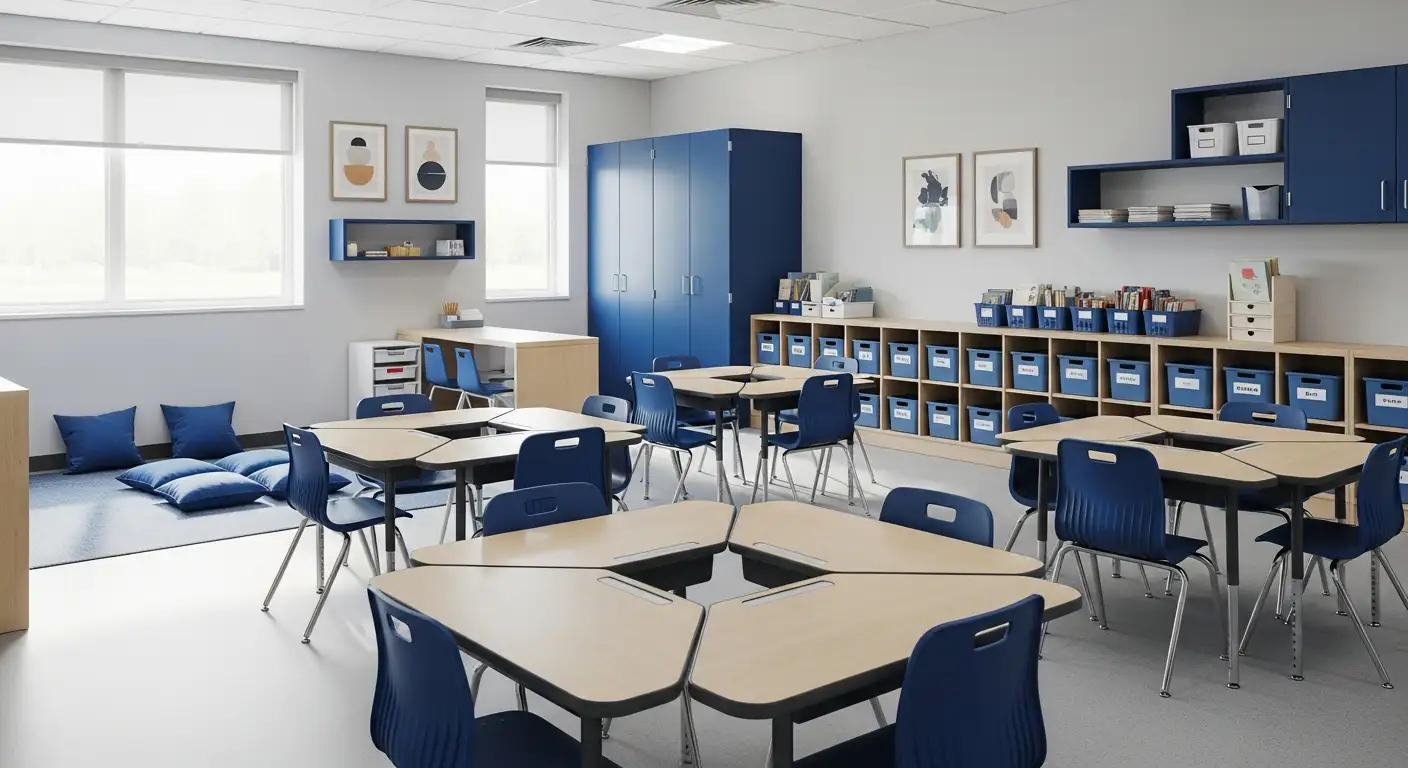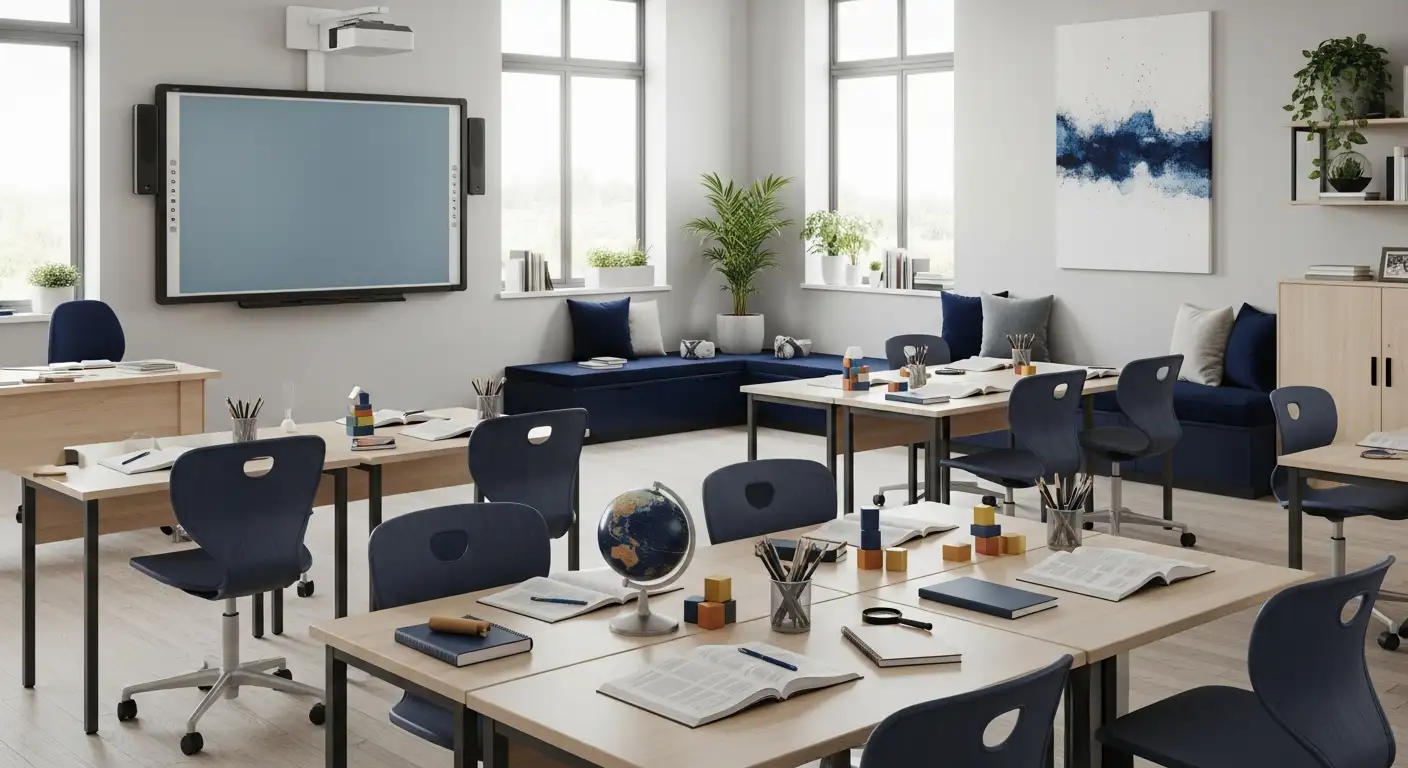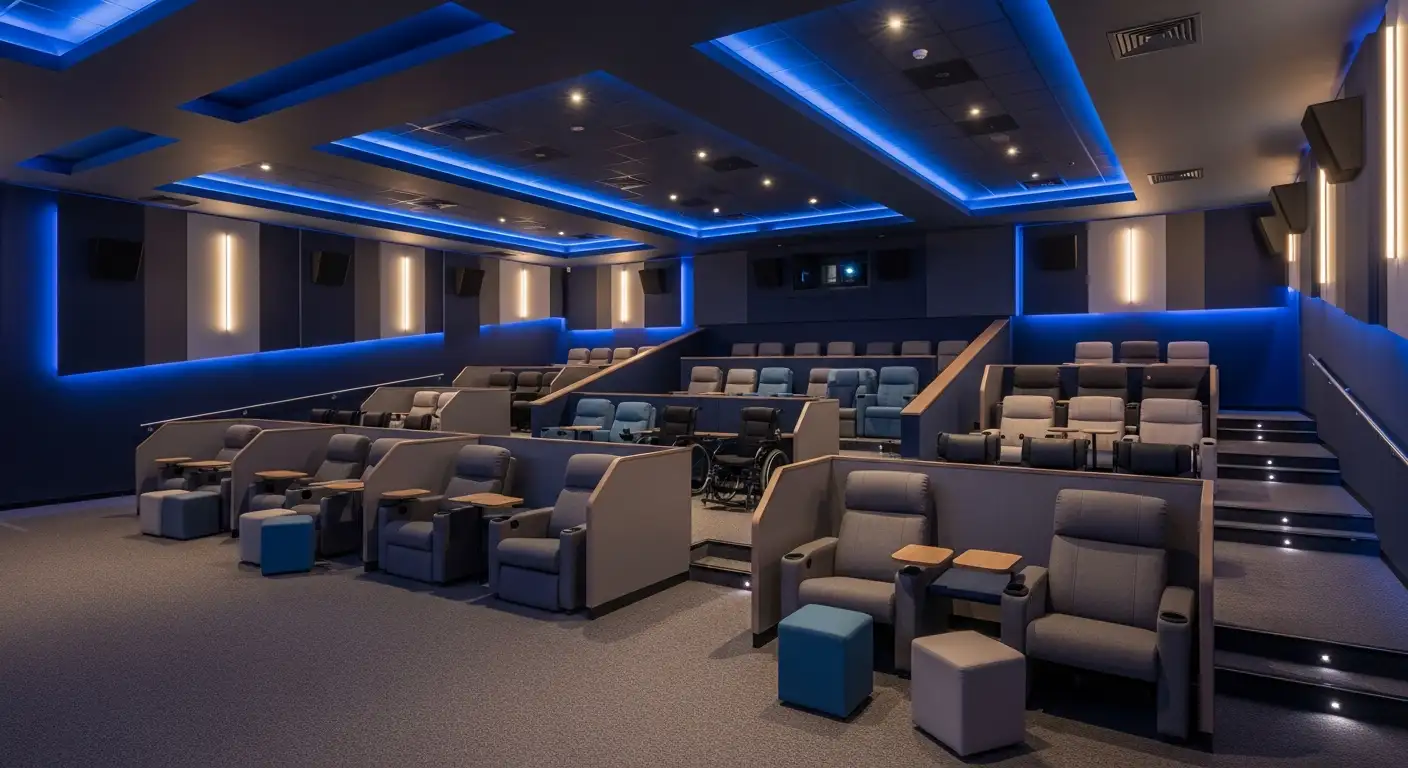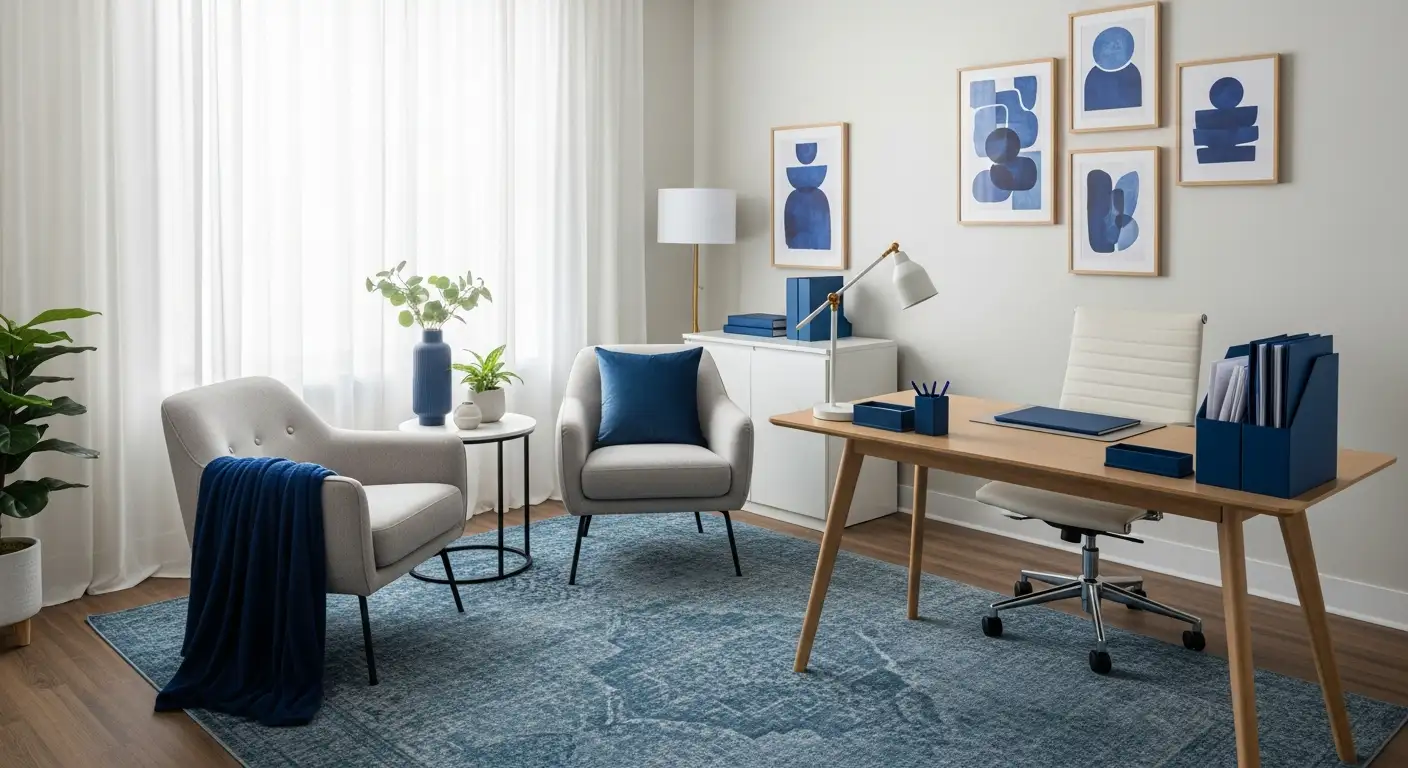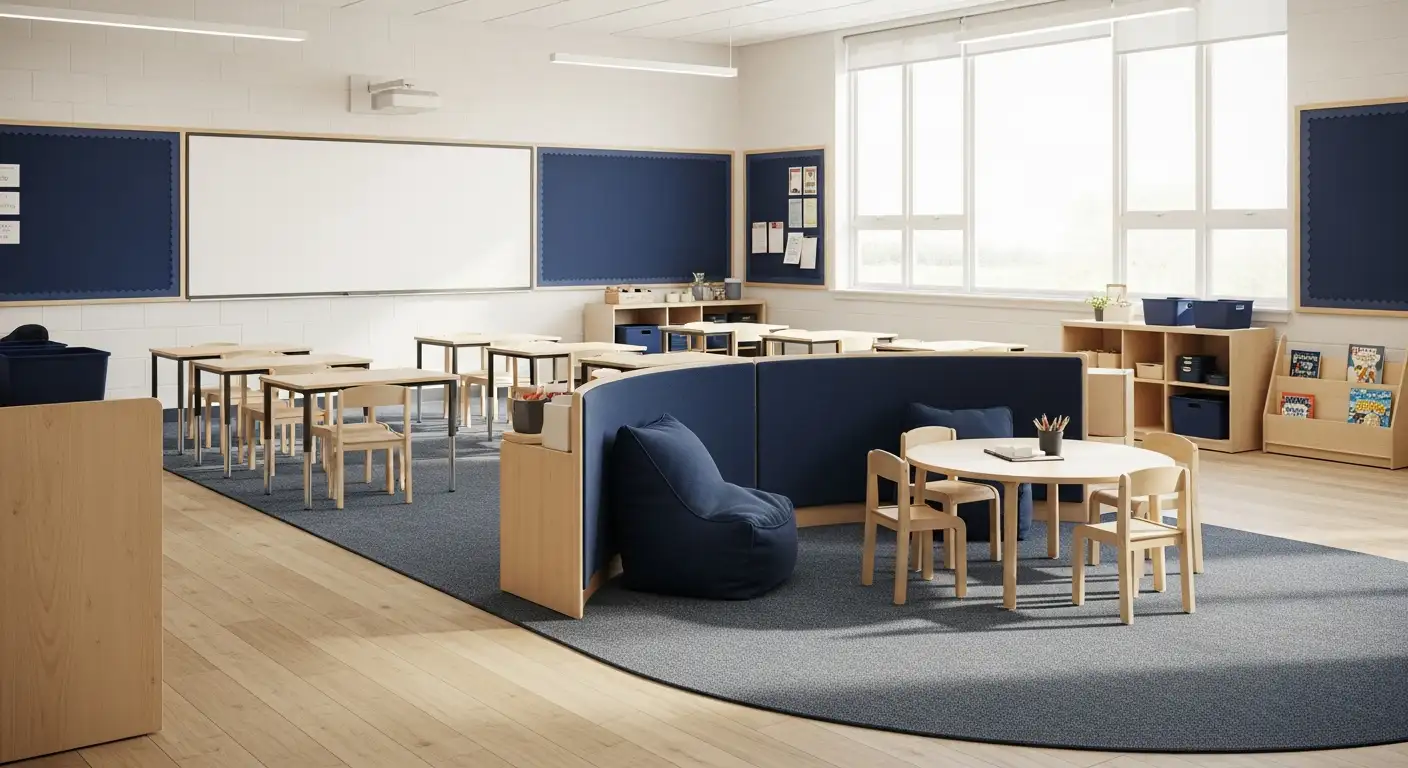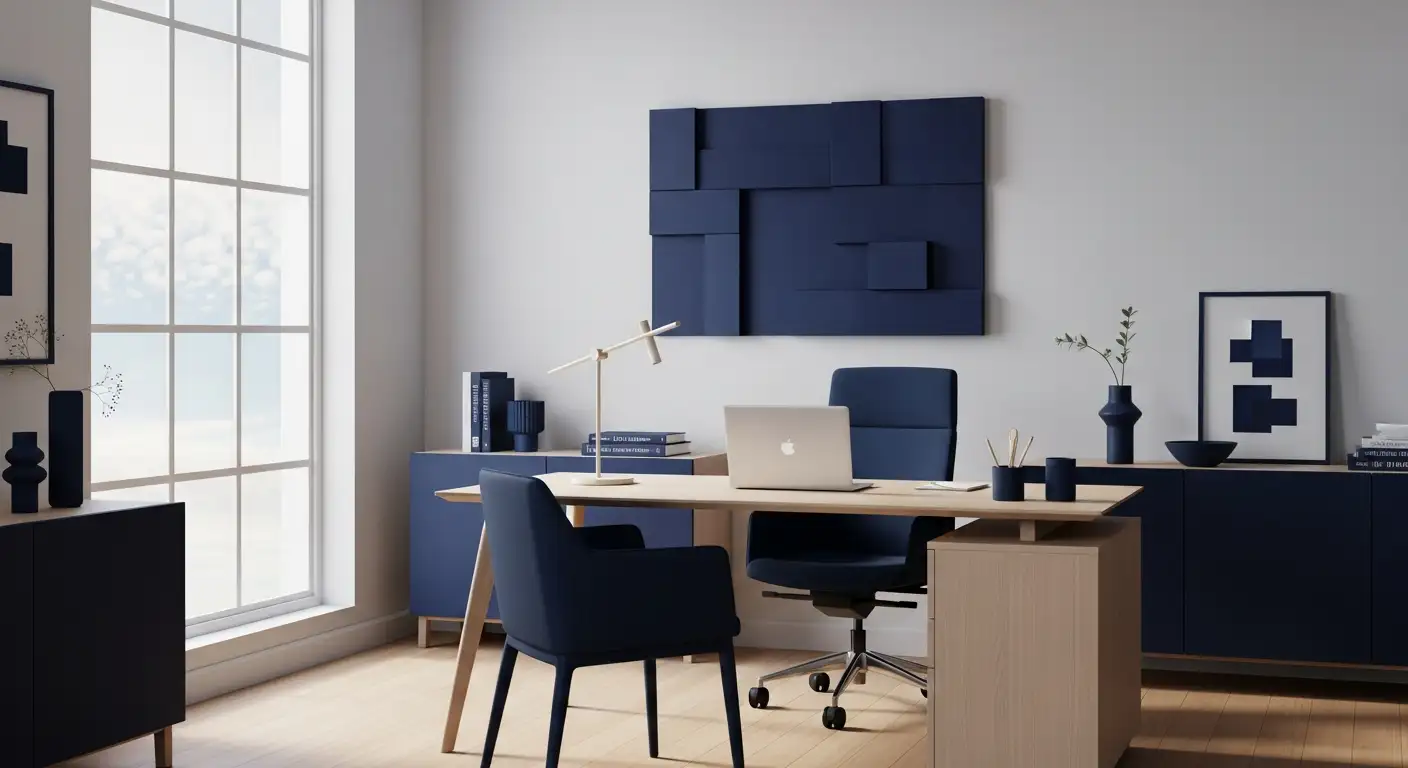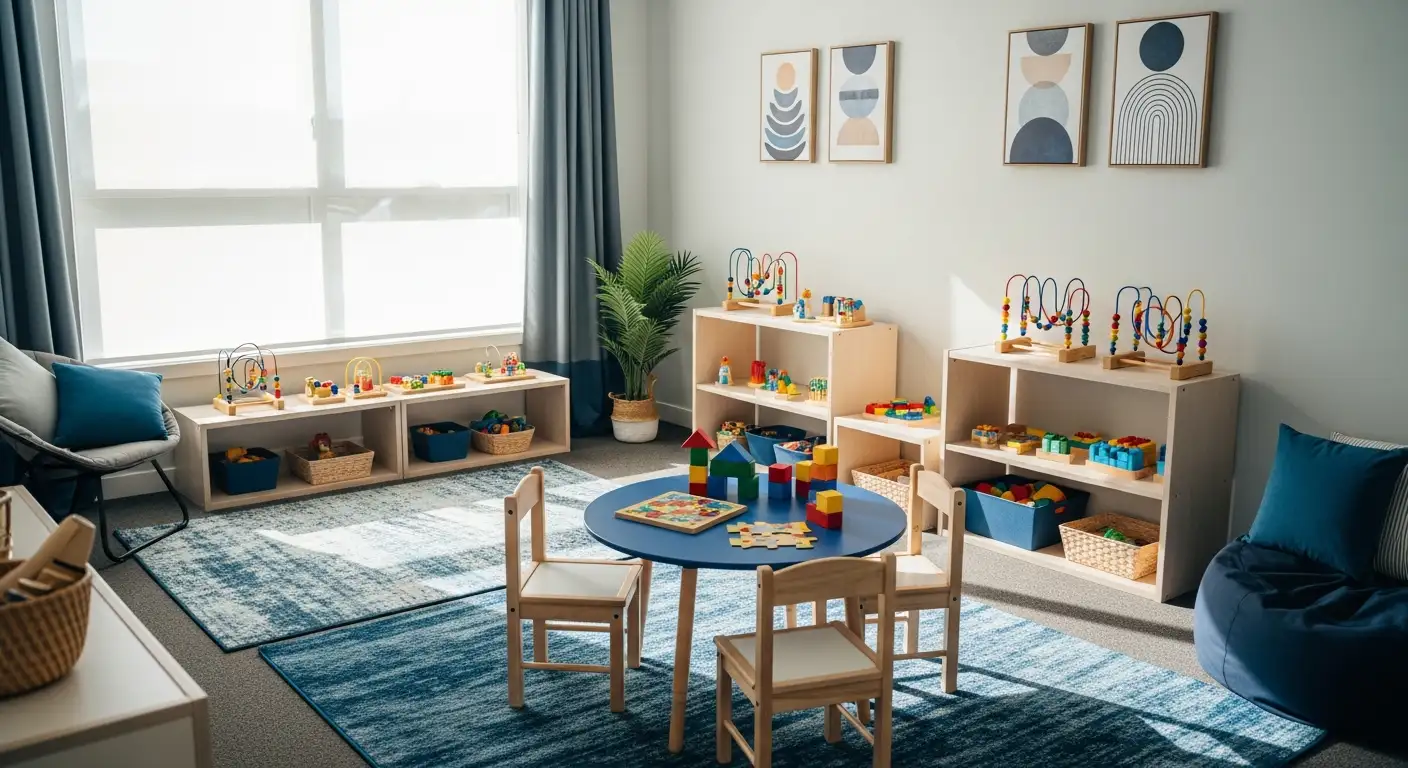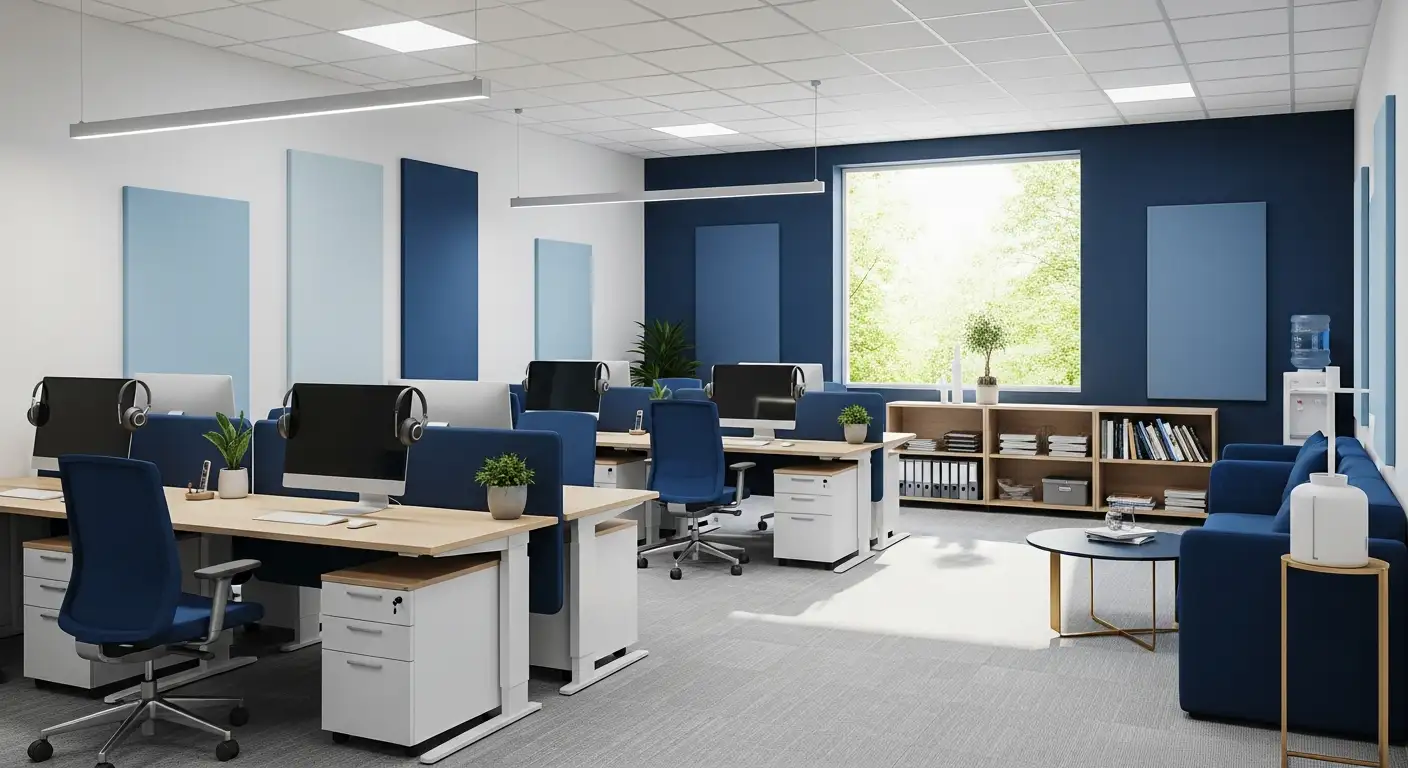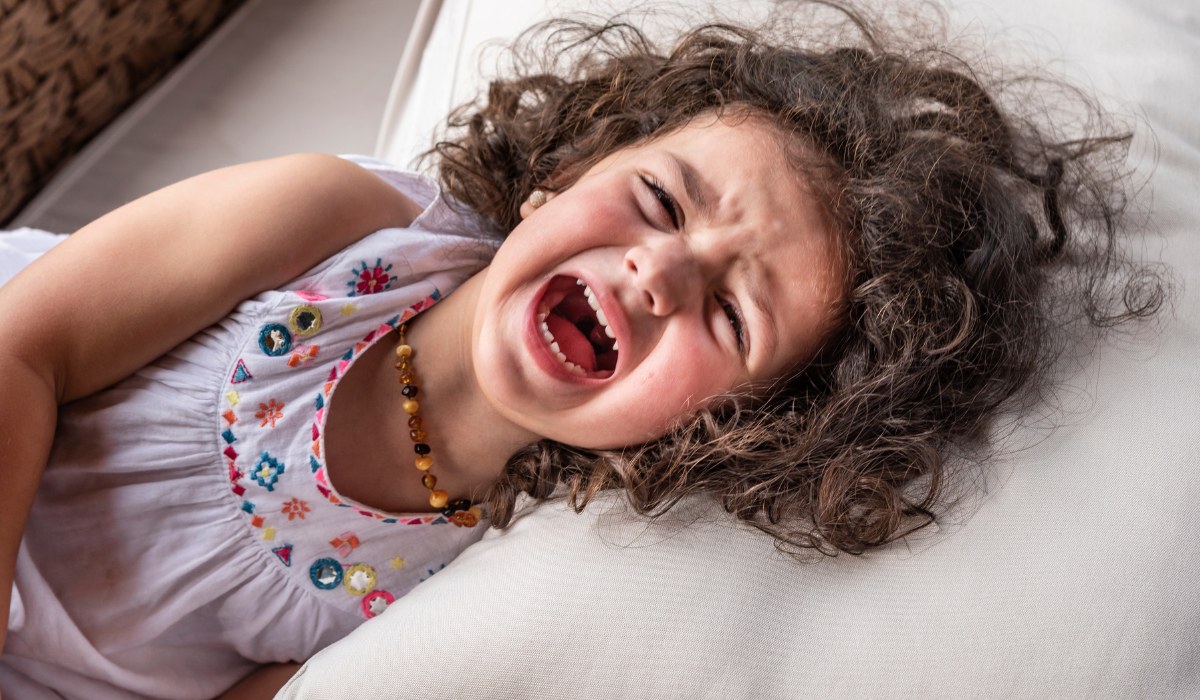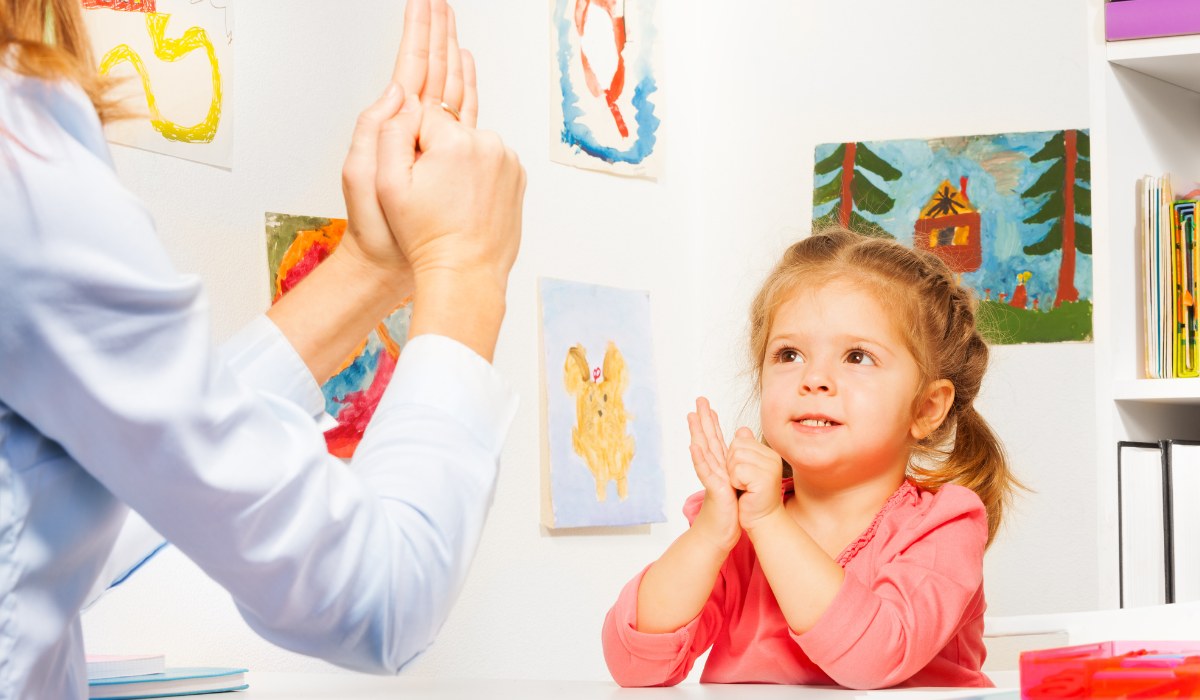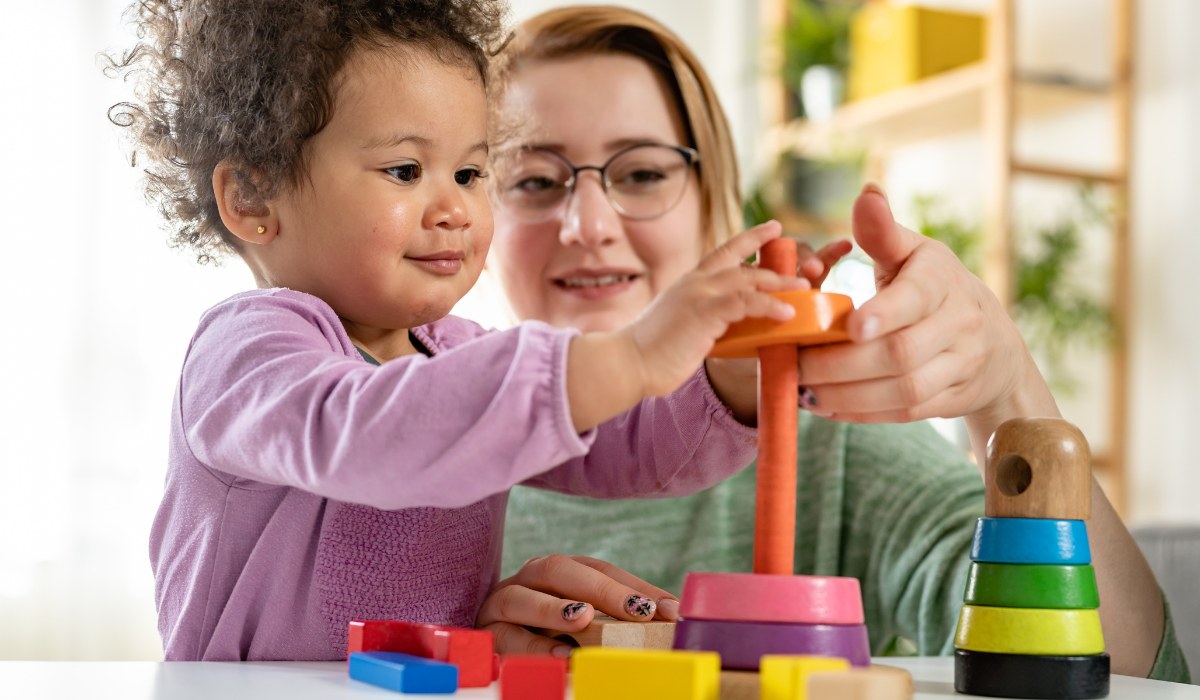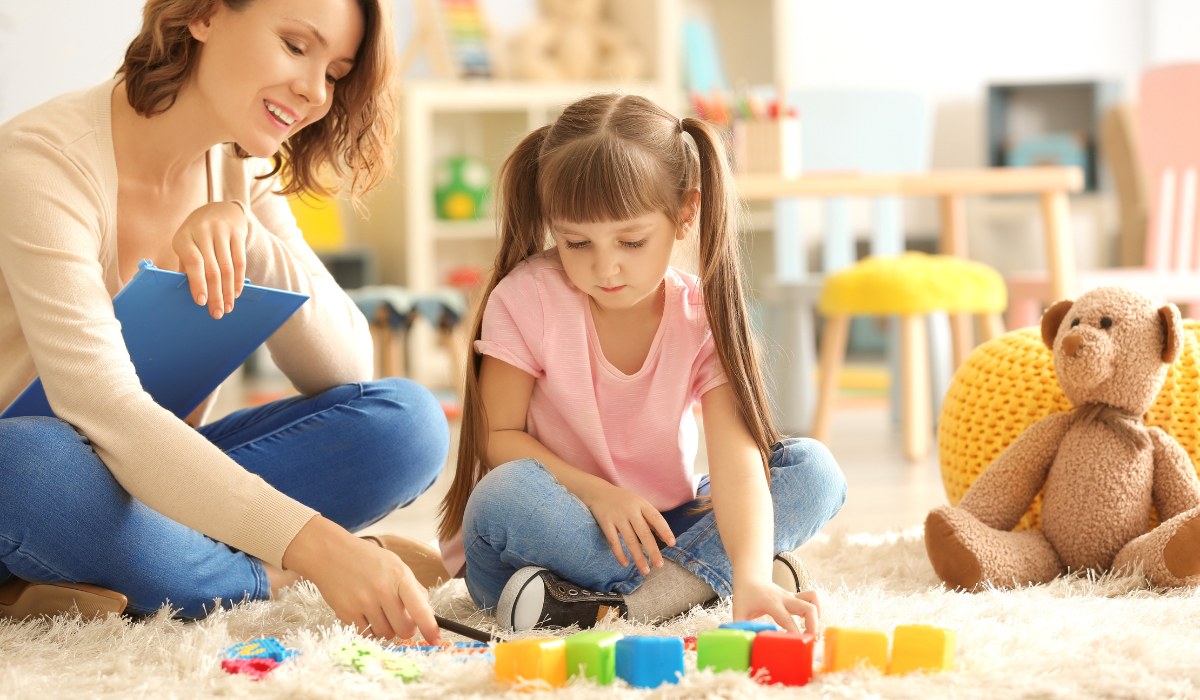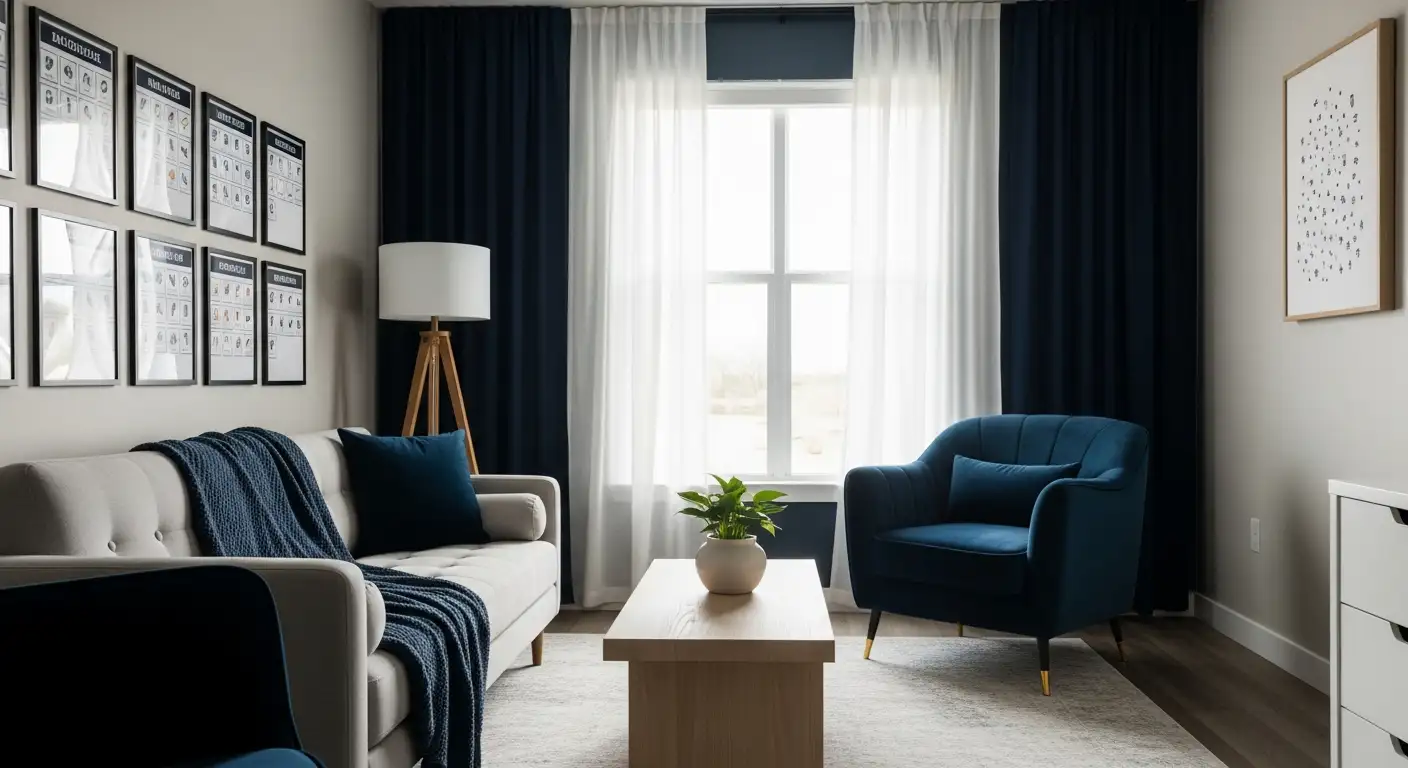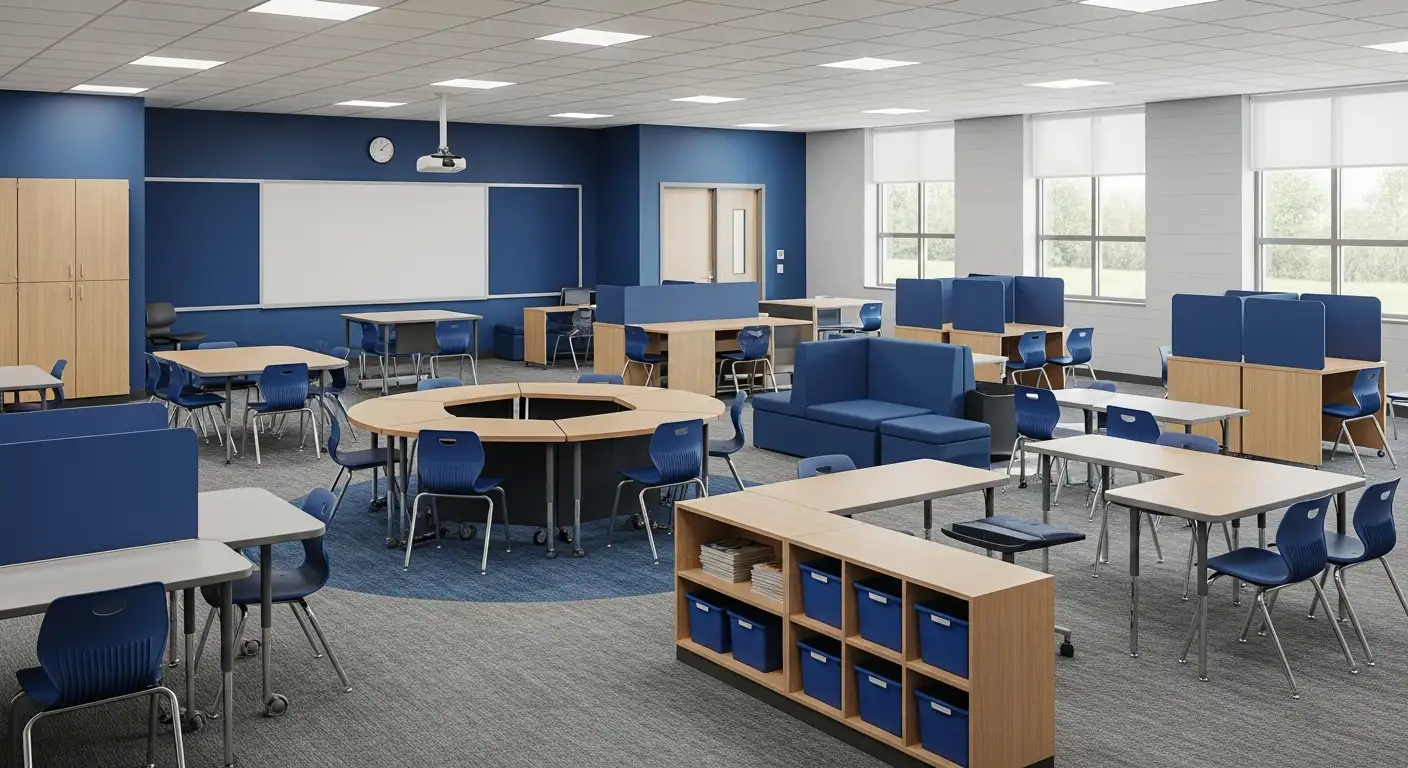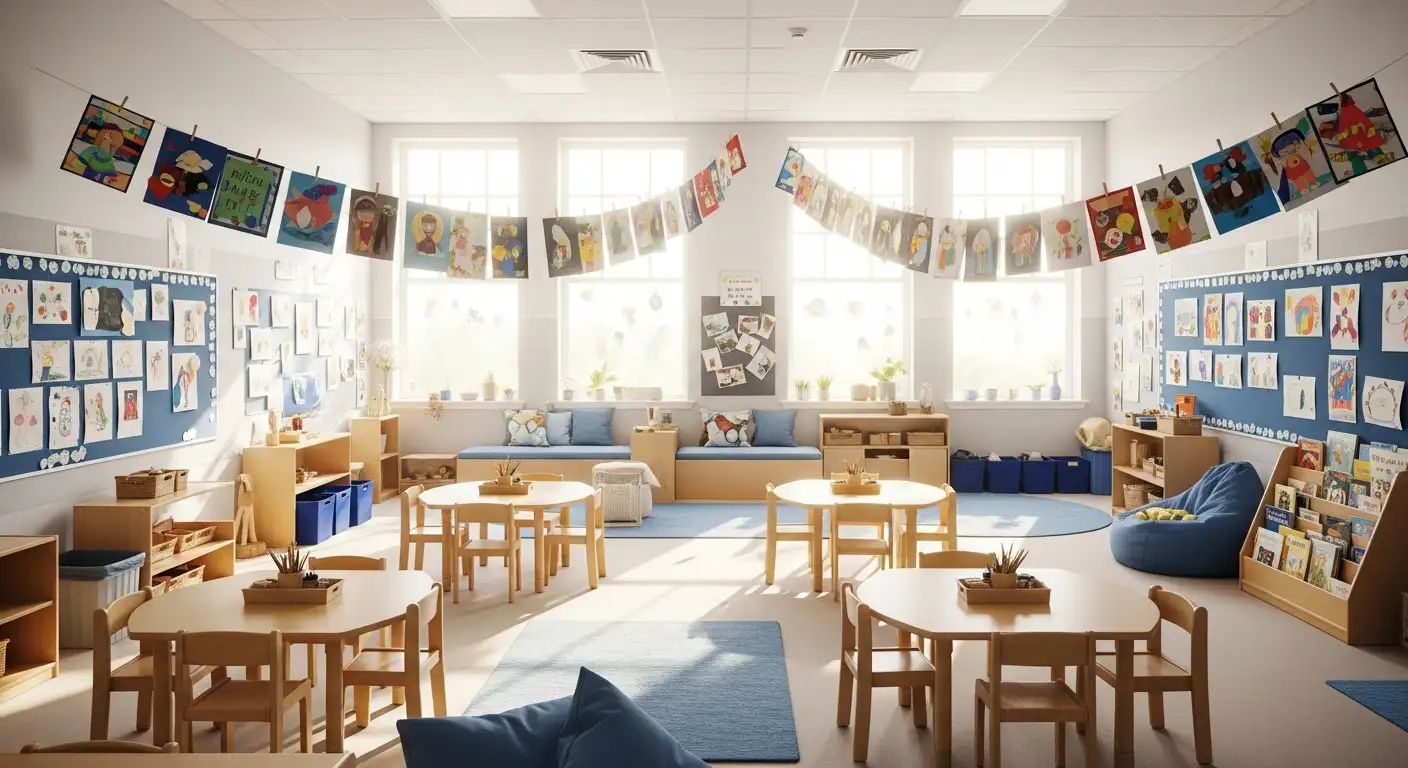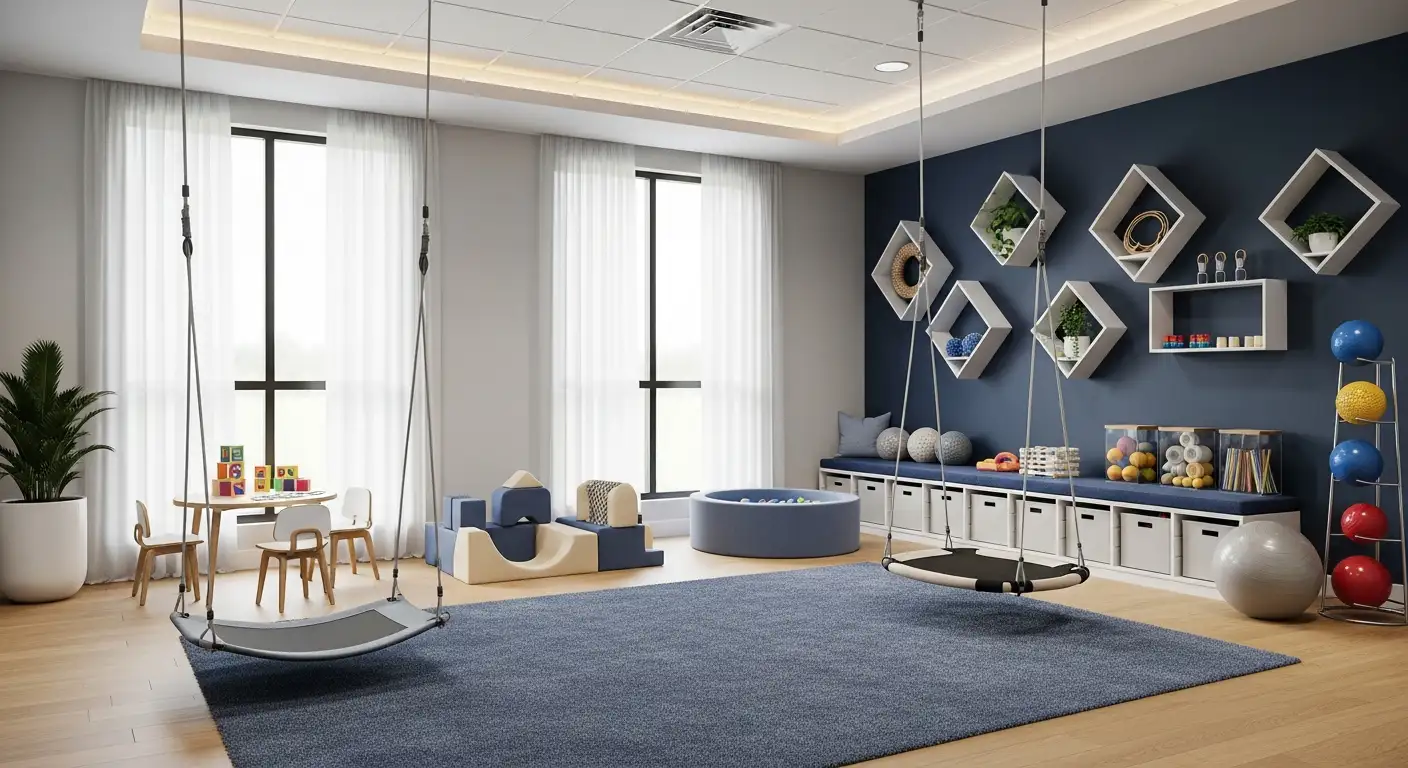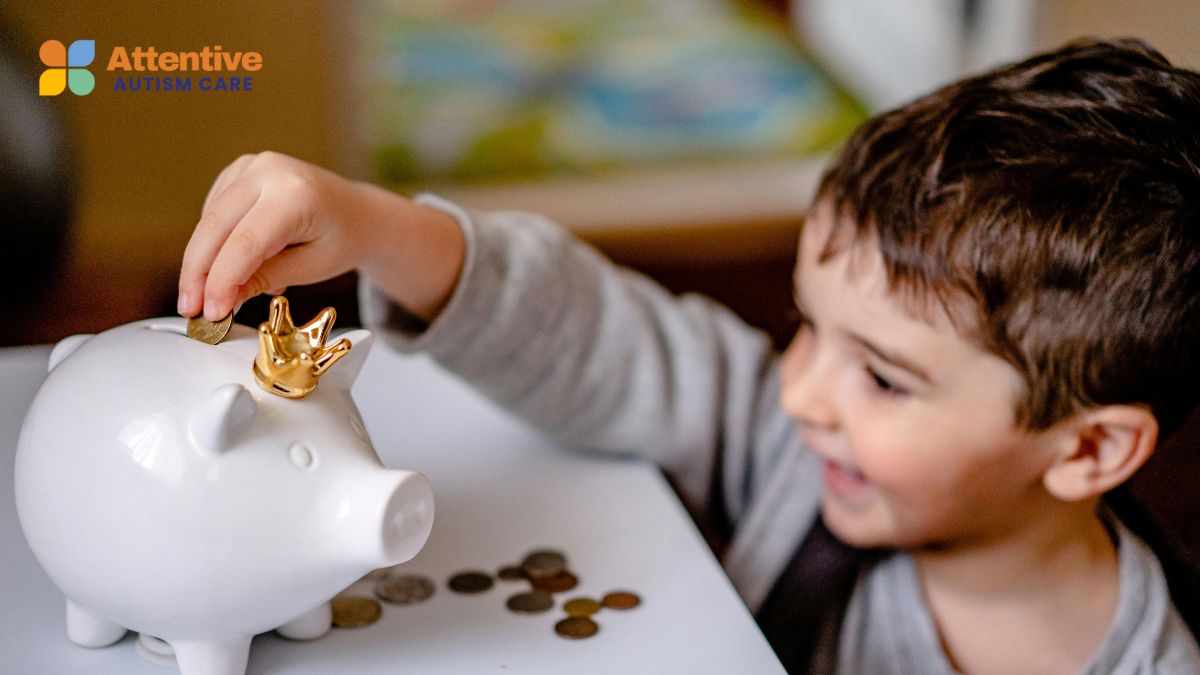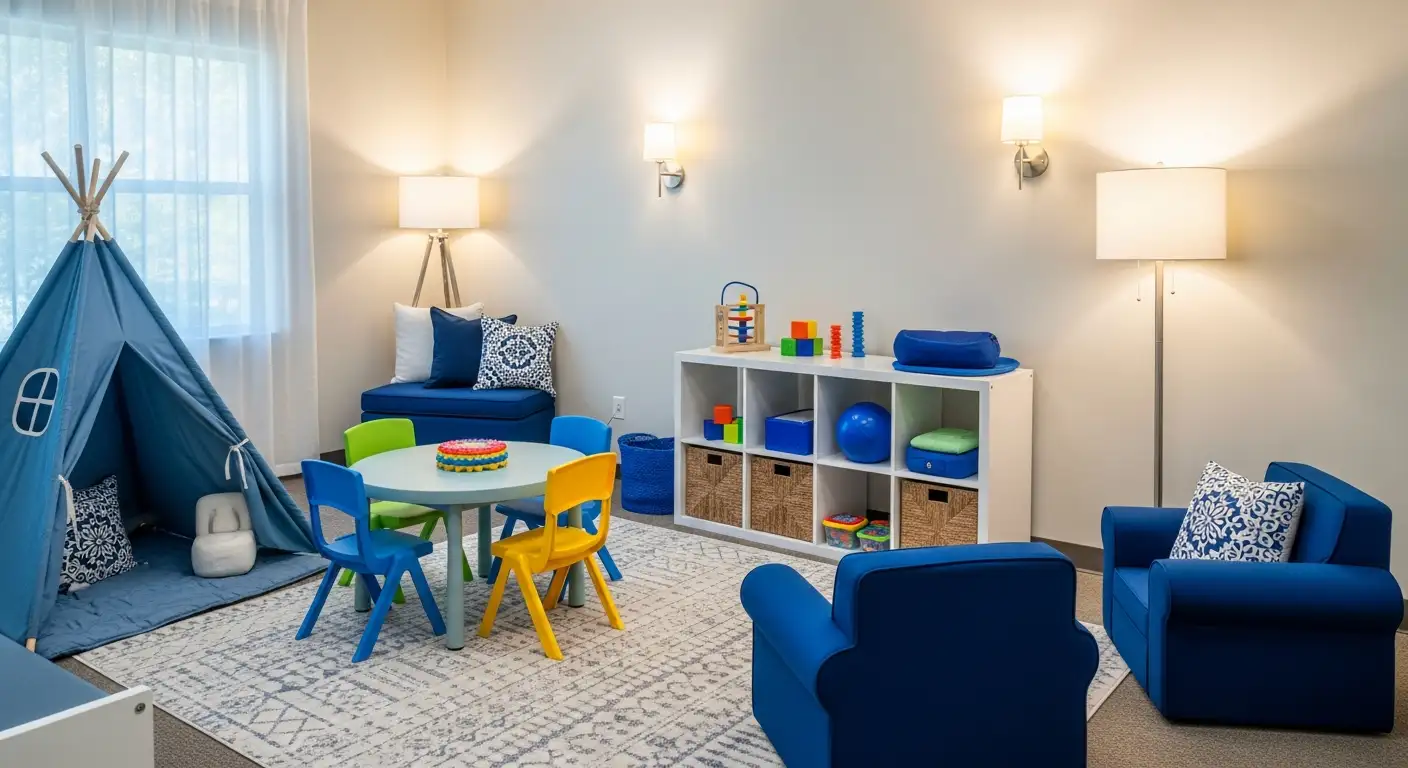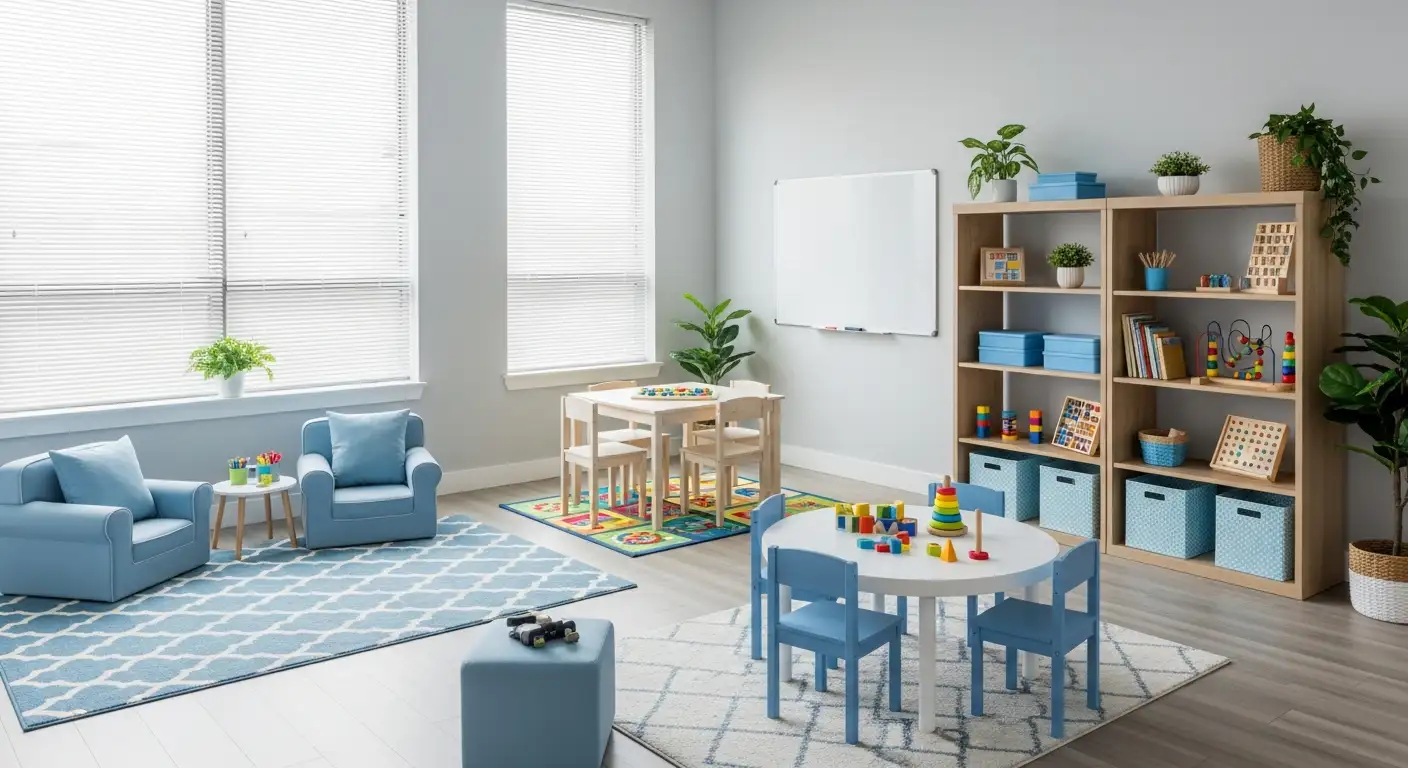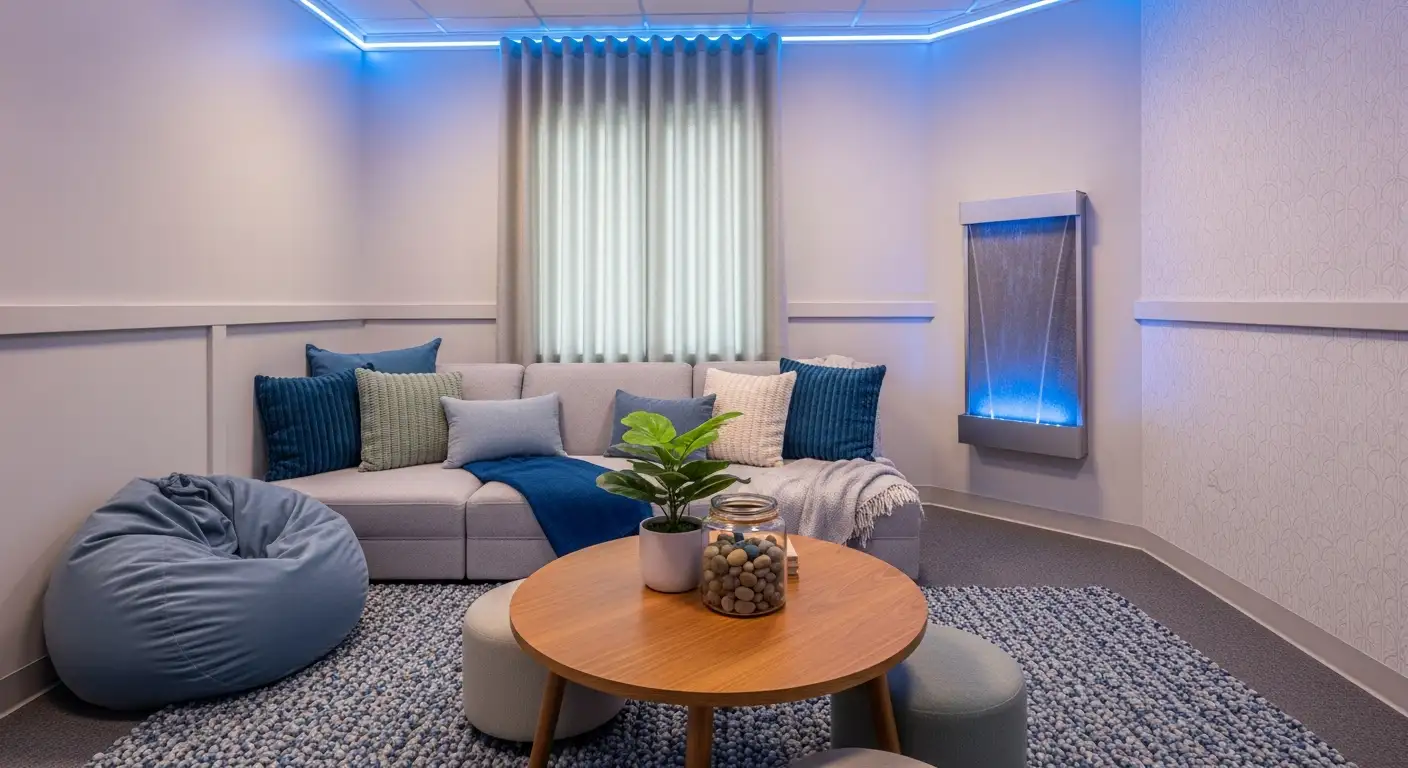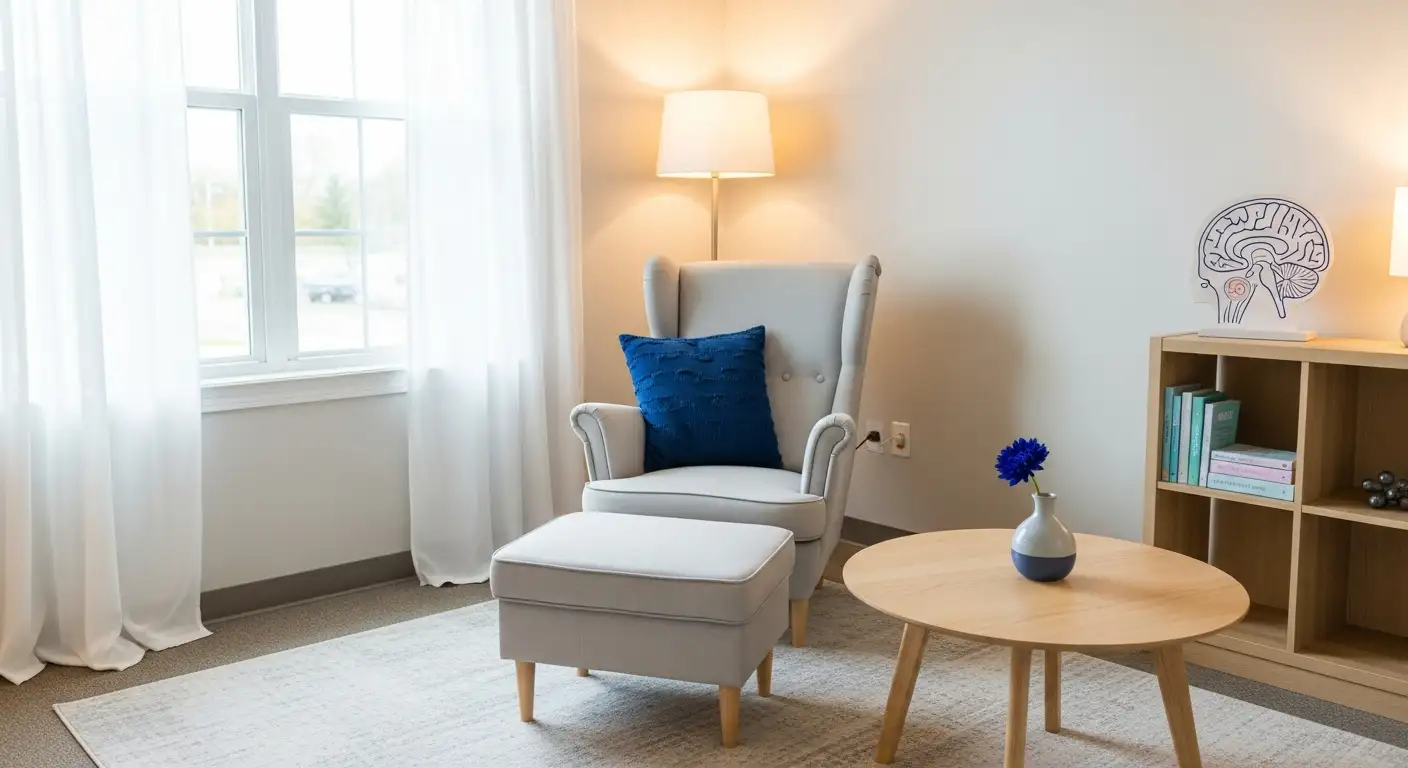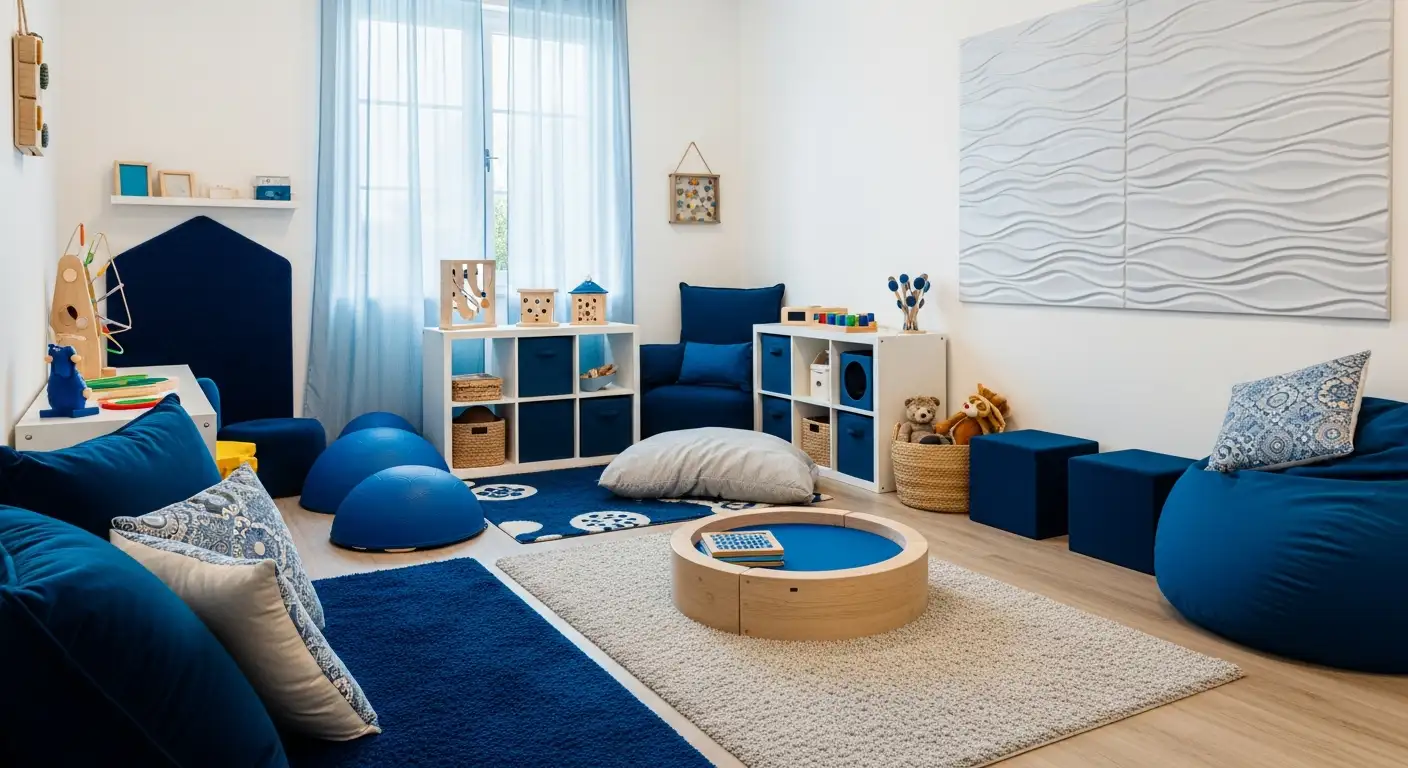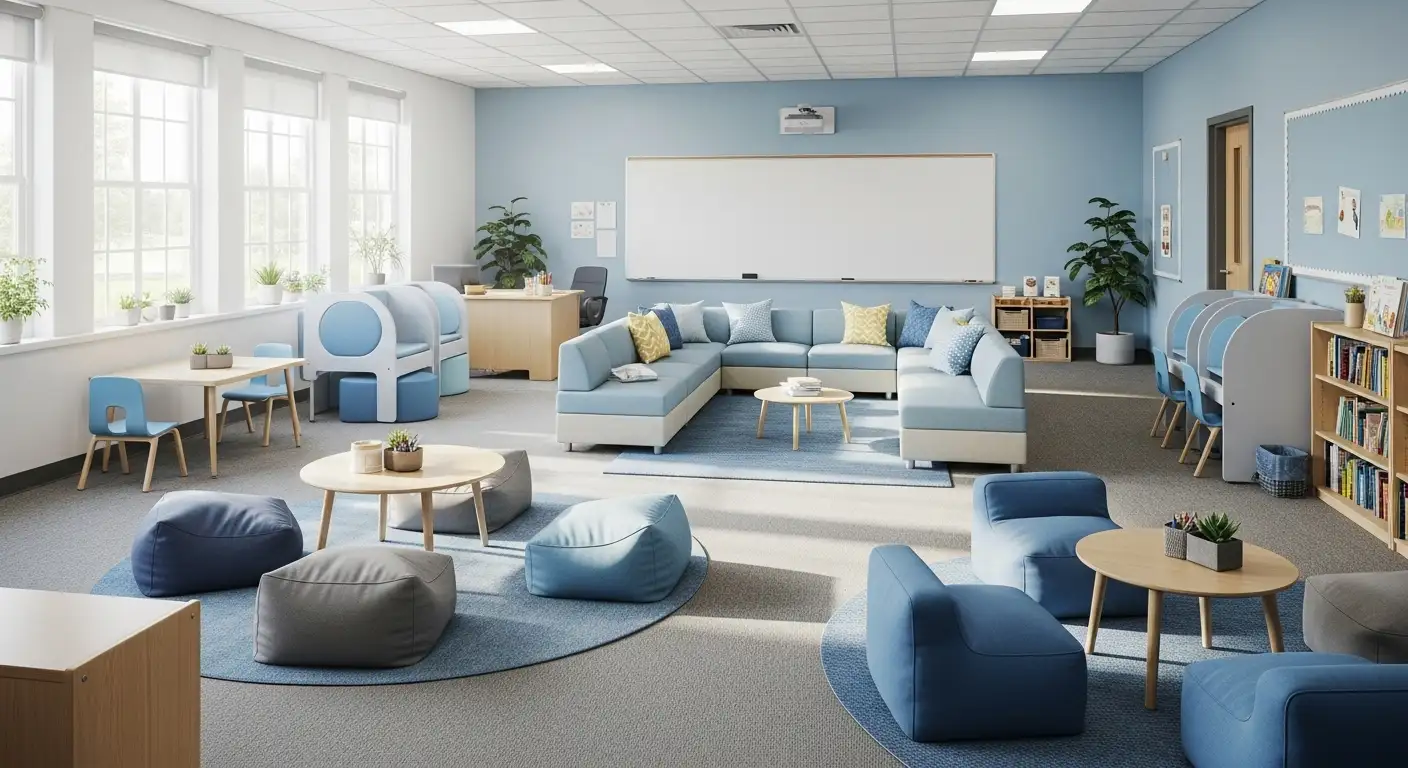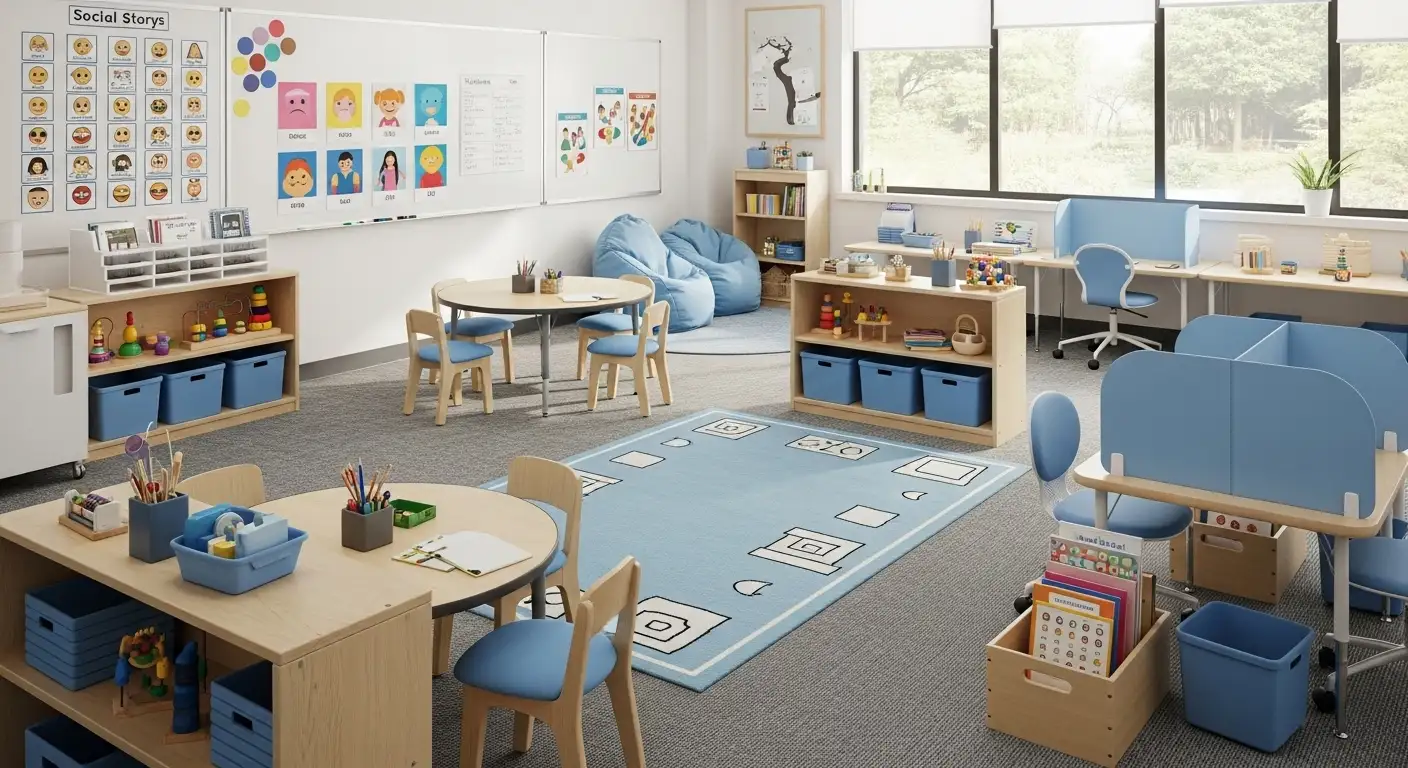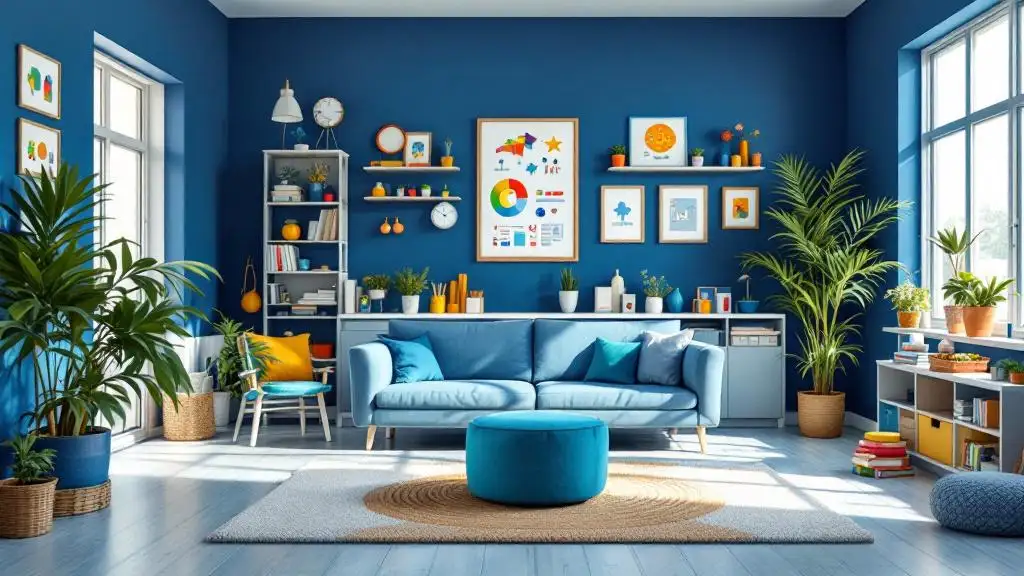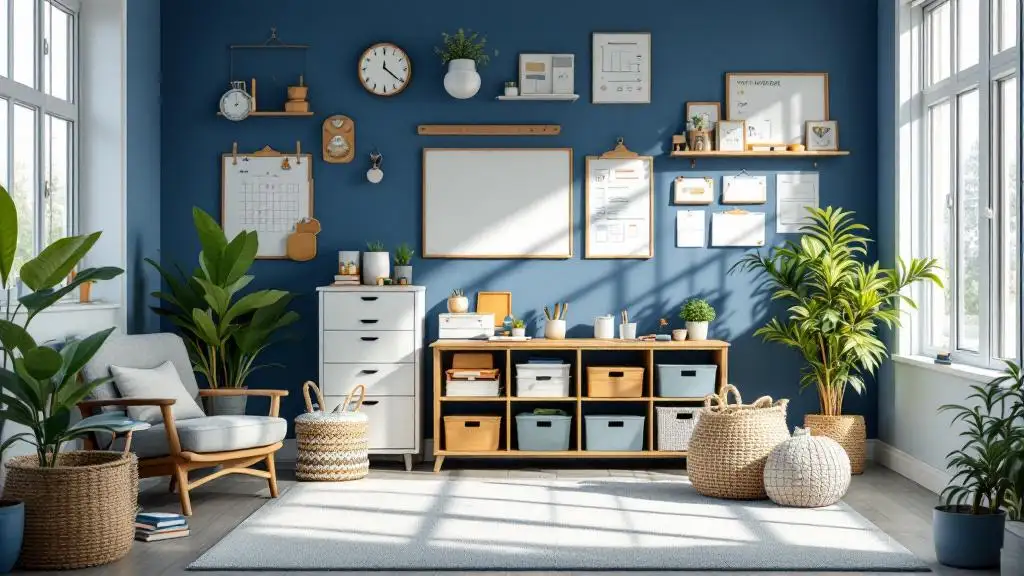Best Sensory Tools to Use for Autism Therapy
Unlocking Potential: Essential Sensory Tools for Autism Therapy

Understanding the Role of Sensory Tools in Autism Therapy
Sensory tools play a pivotal role in autism therapy by engaging various senses to help children with autism spectrum disorder (ASD) regulate emotions, improve focus, and develop essential skills. These tools support sensory integration, which can lead to significant improvements in behavior and learning. Selecting the right sensory tools tailored to a child’s unique sensory preferences is crucial to promoting calmness, engagement, and developmental progress. This article explores seven types of sensory tools commonly used in therapy settings, highlighting their benefits and applications.
Key Facts List on Sensory and ABA Interventions for Autism
- The proprioceptive system provides body awareness, while the vestibular system controls balance and coordination.
- Sensory tools like yoga balls and trampolines stimulate proprioceptive and vestibular input to improve balance, body control, and emotional regulation.
- Tactile tools such as kinetic sand and slime enhance texture tolerance, fine motor skills, and support sensory regulation.
- Visual sensory tools like light projectors and sensory bottles aid attention, calming, and visual processing in children with sensory needs.
- Auditory tools such as music boxes and musical instruments promote emotional expression, language development, and sensory regulation.
- Oral sensory tools like chewies and Z-Vibe help self-regulation, oral motor development, and anxiety reduction.
- Fidget toys and chewelry provide tactile and oral input to help focus, emotional regulation, and motor skills.
- Sensory swings, including platform and cocoon types, deliver vestibular input and emotional stability with safety adjustments.
- Research supports sensory integration therapy improving autistic behaviors and social-emotional skills, with tools tailored to individual sensory profiles.
- Extensive evidence shows ABA therapy is effective for improving communication, social skills, and reducing challenging behaviors in children with autism, especially when started early and tailored individually.
1. Proprioceptive and Vestibular Input Tools to Enhance Sensory Regulation

What are the proprioceptive and vestibular systems?
The proprioceptive system gives us awareness of our body’s position and movement in space, while the vestibular system helps control balance and coordination. Together, these systems allow children to feel grounded, maintain equilibrium, and move smoothly.
What kinds of sensory tools help with proprioceptive and vestibular input?
There are many sensory tools designed to stimulate these systems. Some common examples include:
- Yoga balls: Provide deep pressure and promote core strength.
- Trampolines: Offer rhythmic movement for vestibular stimulation.
- Scooter boards: Facilitate smooth movement and balance practice.
- Balance beams: Challenge coordination and body control.
- Swings and sit-and-spins: Give vestibular input through controlled motion.
- Weighted balls: Provide calming deep pressure for proprioceptive input.
- Tunnels: Encourage crawling which activates both systems.
- Yoga cards: Guide mindful movement to develop body awareness.
How do these tools benefit children with autism?
Children with autism often experience sensory processing challenges that can affect their ability to stay calm and focused. Proprioceptive and vestibular input tools help regulate these sensory systems by providing predictable and controlled stimulation. This:
- Enhances balance and coordination.
- Improves body awareness, leading to better motor skills.
- Supports emotional regulation by helping children feel centered and secure.
- Reduces sensory overload by offering calming input.
How are these tools applied in sensory regulation?
Choosing the right proprioceptive and vestibular sensory tools involves observing a child's individual preferences and needs. For instance, a child who seeks movement might benefit from swings or trampolines, while one who craves deep pressure may find weighted balls or yoga balls soothing.
In therapy settings, swings with adjustable harnesses can be tailored for safety and comfort, making them inclusive of various motor abilities and needs.
These tools become an integral part of sensory regulation strategies, helping children find balance to feel calm, focused, and ready to engage in learning and play. By encouraging active exploration and movement, proprioceptive and vestibular input toys empower children to manage their sensory systems effectively.
| Sensory Tool | Type of Input | Benefit Description |
|---|---|---|
| Yoga Balls | Proprioceptive | Provides deep pressure and strengthens core muscles |
| Trampolines | Vestibular | Offers rhythmic movement to soothe and coordinate |
| Scooter Boards | Vestibular | Enhances balance and body control through rolling |
| Balance Beams | Vestibular | Improves coordination and spatial awareness |
| Swings & Sit-and-Spins | Vestibular | Controlled movement for calming vestibular input |
| Weighted Balls | Proprioceptive | Delivers calming deep pressure to regulate emotions |
| Tunnels | Both | Encourages crawling to activate multiple sensory systems |
| Yoga Cards | Proprioceptive | Guides mindful movement for increased body awareness |
2. Tactile Sensory Tools Supporting Texture Exploration and Tolerance
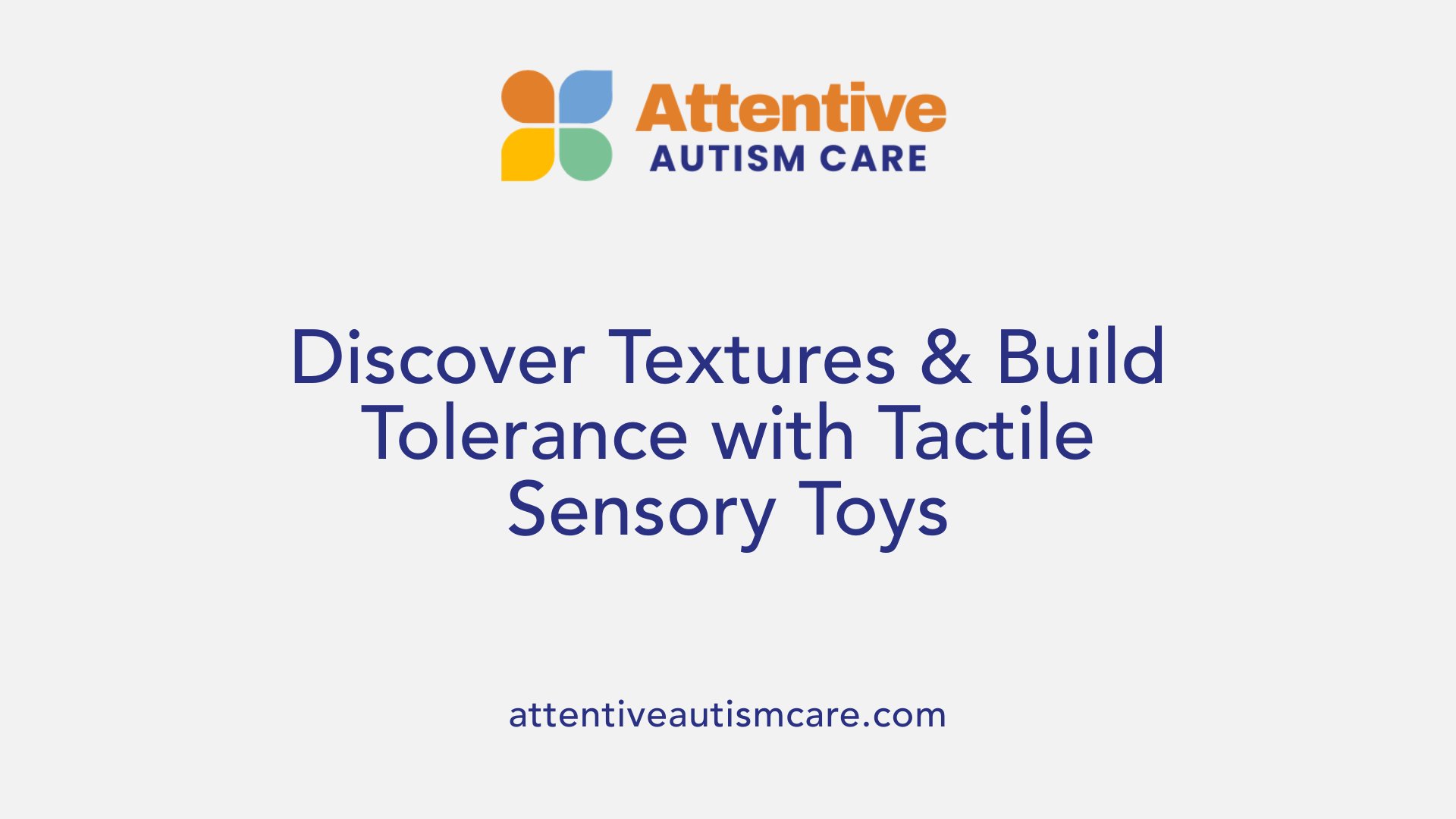
What is the Role of Tactile Input in Sensory Processing?
Tactile input plays a crucial role in helping children process sensory information through the sense of touch. It supports their ability to explore different textures and sensations, which can be both soothing and stimulating. For children with sensory processing differences, such as those on the autism spectrum or with ADHD, tactile input helps them regulate their sensory systems. This regulation promotes calmness, focus, and readiness to engage with the environment.
What Sensory Tools Provide Tactile Input for Children?
There are many tactile sensory tools designed to meet various sensory needs and preferences. Notable examples include:
- Kinetic sand: Its moldable texture encourages creativity and fine motor skill development.
- Pop tubes: Flexible tubes that create sounds and provide resistance when stretched, offering both tactile and auditory feedback.
- Bristle blocks: Interlocking blocks with bristly surfaces encourage tactile exploration and construction play.
- Sensory bins: Containers filled with a variety of textured materials such as rice, beans, or beads to explore different sensations.
- Tactile tiles: Textured tiles that provide tactile stimulation through touch.
- Slime kits and putty: Allow children to squish, stretch, and manipulate different consistencies, enhancing tactile engagement.
- Play-Doh: A classic tactile toy that supports texture tolerance and creative play.
These tools provide safe opportunities for children to experience and tolerate different textures, which helps build sensory processing skills and hand strength.
What Are the Benefits of Tactile Stimulation?
Tactile stimulation offers several important benefits:
- Sensory regulation: Helps children manage sensory overload and seek needed sensory input.
- Fine motor development: Manipulating textured toys improves hand and finger strength and coordination.
- Emotional regulation: Engaging with tactile toys can be calming and reduce anxiety.
- Tolerance building: Repeated exposure to varied textures can increase acceptance and comfort with tactile experiences often challenging for children with sensory sensitivities.
How Are Tactile Sensory Toys Used in Therapy Sessions?
In therapeutic settings, tactile sensory tools serve as effective instruments for promoting sensory integration and skill development. Therapists observe the child's response to different textures and use toys like slime kits or sensory bins to tailor activities toward the child’s preferences and needs. This individualized approach facilitates sensory regulation, emotional expression, and social interaction.
Moreover, tactile toys often act as entry points into play therapy, providing engagement that supports language growth and cognitive development. By combining tactile exploration with guided interaction, these tools help children build essential life skills while enjoying therapeutic play.
| Tactile Sensory Toy | Description | Therapeutic Benefit |
|---|---|---|
| Kinetic Sand | Moldable sand-like substance | Enhances fine motor control and creativity |
| Pop Tubes | Stretchable, sound-producing tubes | Provides tactile and auditory feedback for regulation |
| Bristle Blocks | Interlocking blocks with textured surfaces | Encourages tactile exploration and construction play |
| Sensory Bins | Containers filled with varied textures | Supports texture tolerance and exploratory play |
| Slime Kits & Putty | Stretchy, malleable substances | Calming touch and hand strength development |
| Play-Doh | Classic modeling compound | Fine motor skill support and sensory expression |
3. Visual Sensory Tools to Stimulate and Engage

Importance of Visual Input
Visual sensory input plays a crucial role in helping children, especially those with sensory processing differences such as autism or ADHD, to regulate and engage effectively. For many children, visual stimuli can offer a calming effect or a way to direct attention, making it easier to focus and participate in activities. Visual sensory tools provide an accessible and enjoyable means to support sensory regulation by catering to children's natural inclination toward visual engagement.
Varieties of Visual Sensory Toys
Several types of toys are designed to stimulate the visual system. Common visual sensory tools include spin toys that create mesmerizing motion, light projectors that cast colorful, moving images, and story flashlights that combine storytelling with illuminating visuals. Sensory bottles filled with liquid and floating objects offer captivating visual movement, while light-up boards provide interactive and vibrant displays. Marble runs engage visual tracking skills through dynamic motion as marbles travel varied paths.
How Visual Stimulation Supports Sensory Needs
These visual tools help children who crave visual input manage their sensory systems by capturing their attention and offering soothing visual feedback. This visual engagement can promote a calm and focused state, which is essential for emotional regulation and readiness to learn. By offering controlled visual stimuli, these toys help children explore and understand sensory experiences in a safe, regulated environment.
Examples of Use Cases
For instance, a child with autism who is anxious or easily distracted may benefit from watching a sensory bottle's slow-moving objects or the gentle flashes of a light projector during calming routines. Spin toys can be used to provide vestibular input combined with visual motion, helping children regulate energy levels. Story flashlights can enrich language development and storytelling time by making stories more vivid and engaging visually. These examples highlight how visual sensory tools serve multiple developmental and regulatory roles.
| Visual Sensory Tool | Purpose | Benefit |
|---|---|---|
| Spin Toys | Provide visual motion and vestibular input | Help regulate sensory input and focus energy |
| Light Projectors | Project colorful moving images | Offer calming visual stimuli and focus aid |
| Story Flashlights | Combine light with storytelling | Promote language and visual engagement |
| Sensory Bottles | Contain liquid with floating objects | Soothe anxiety and promote focused attention |
| Light-Up Boards | Interactive illuminated displays | Stimulate visual tracking and cognitive engagement |
| Marble Runs | Dynamic marble movement | Enhance tracking skills and sensory exploration |
4. Auditory Sensory Tools: Music and Sound for Emotional and Sensory Regulation

How do auditory sensory tools engage the auditory system?
Auditory sensory tools are designed to stimulate the sense of hearing, which is crucial for both sensory processing and emotional regulation. By engaging the auditory system with sounds, rhythms, and music, these tools can help children become more aware of auditory stimuli and manage their sensory responses effectively. This engagement can create a calming or energizing effect depending on the sound patterns and volume presented.
What examples of auditory sensory toys are available?
Several types of auditory sensory toys provide sound stimulation for children. Common examples include:
- Music boxes that play melodies to soothe or engage
- Musical instruments such as drums, xylophones, maracas, and bells for active auditory exploration
These toys offer a way for children to explore different sounds and rhythms while promoting sensory regulation.
What benefits do auditory sensory toys offer for regulation and development?
Auditory sensory toys have multiple benefits for children, especially those with sensory processing differences such as autism or ADHD. These include:
- Sensory regulation: Helping children manage overstimulation or seek stimulation to reach a calm, attentive state
- Emotional expression: Providing a channel for expressing feelings through music and movement
- Language development: Introducing new sounds and words, supporting speech and communication skills
- Cognitive growth: Enhancing pattern recognition and auditory discrimination
These benefits contribute to improved focus, emotional balance, and social engagement.
How are auditory sensory toys used therapeutically?
In therapy, auditory sensory tools are integrated to support children with autism and other developmental conditions. Structured play and music therapy sessions use these toys to:
- Create safe environments for exploring sound and rhythm
- Encourage interaction and communication
- Reduce anxiety and sensory overload
Such therapeutic applications often tailor sound exposure to individual sensitivities and preferences, optimizing sensory integration and behavioral outcomes.
Which auditory sensory tools are recommended for children with autism?
For children with autism, auditory sensory tools such as music boxes and various musical instruments are highly effective. They provide consistent and predictable auditory input that can be calming or stimulating as needed. Engaging with these tools supports sensory regulation, emotional development, and language skills, crucial for overall progress.
| Aspect | Details | Therapeutic Impact |
|---|---|---|
| Auditory System Engagement | Exposure to music and sound patterns | Aids sensory processing and emotional regulation |
| Toy Examples | Music boxes, drums, xylophones, maracas | Provides accessible sound stimulation |
| Benefits | Regulation, emotional expression, cognitive growth, language development | Supports developmental goals and symptom management |
| Therapeutic Use | Music therapy, structured sensory play | Enhances communication, reduces anxiety |
5. Oral Sensory Tools to Support Safe Oral Sensory Input
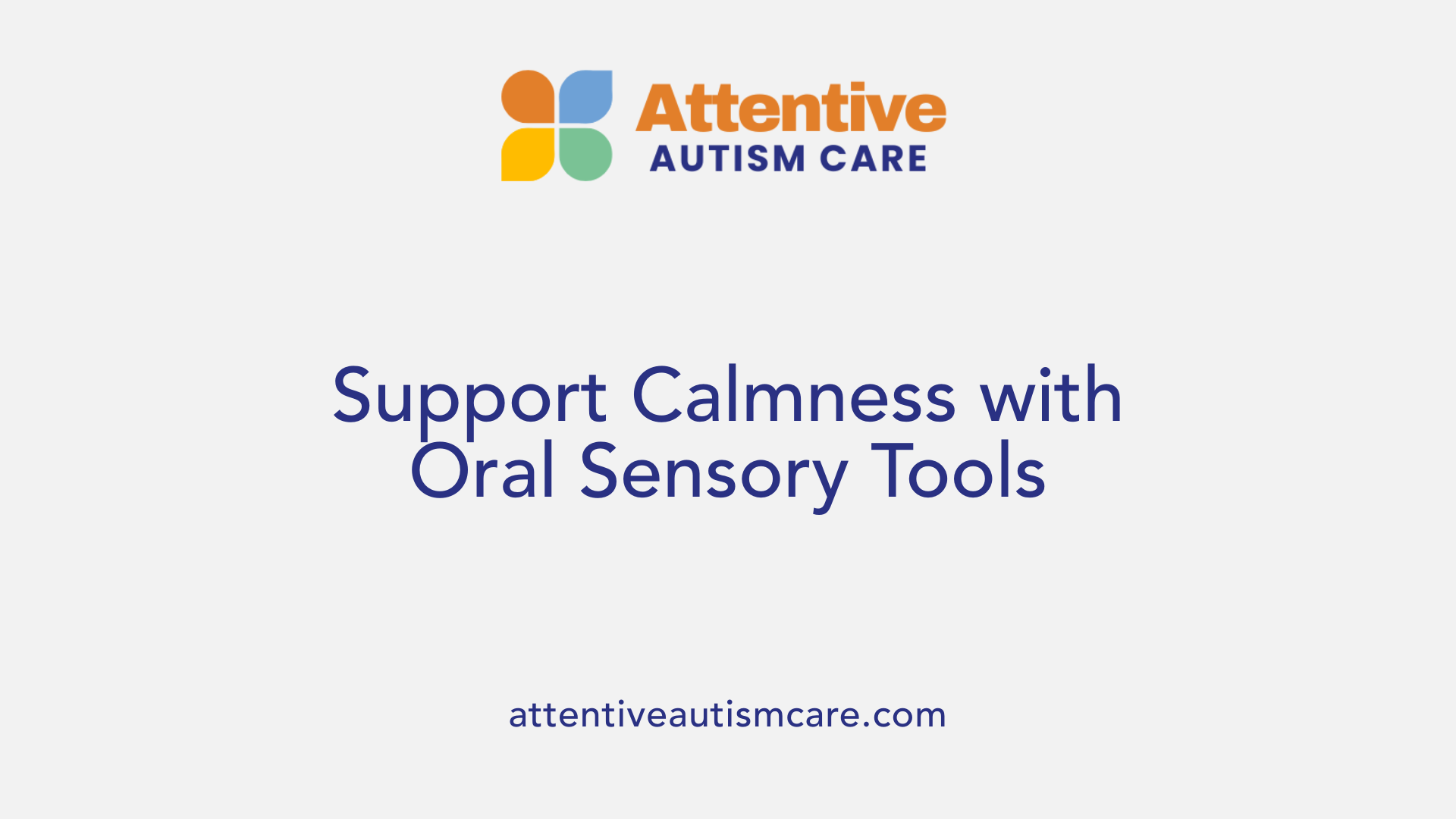
Role of oral input in sensory regulation
Oral sensory tools play a crucial part in helping children regulate their sensory experiences by providing safe oral stimulation. For children with sensory processing challenges, such as those with autism or ADHD, effective oral input can help manage oral seeking behaviors and reduce anxiety. This form of sensory engagement supports children in feeling calm, focused, and ready to participate in other activities, contributing to overall sensory regulation.
Examples of oral sensory tools
Several oral sensory tools are commonly used to meet these needs. Chewies are popular for their durable design that allows children to bite or chew safely, satisfying their need for oral input. The Z-Vibe is a specialized vibrating oral tool that helps provide soothing sensory feedback and can be used to stimulate oral muscles for developmental benefits. Additionally, bubbles are an accessible and fun way to encourage oral motor skills and breathing control while providing oral sensory input.
Benefits in therapy and everyday use
In therapeutic settings, these oral sensory tools are instrumental for behavior management and emotional regulation. They allow therapists to create a safe environment where children can explore oral sensations without risk of harm. At home or in school, these tools promote self-regulation, enabling children to manage their sensory needs independently. This can lead to improved attention, reduced frustration, and better engagement in both learning and social activities. Oral sensory tools often work alongside other sensory toys to provide a holistic approach to sensory integration and support language development through increased focus and interaction.
| Oral Sensory Tool | Description | Therapeutic and Everyday Benefits |
|---|---|---|
| Chewies | Durable, chew-safe items | Reduces oral seeking behavior, promotes calmness |
| Z-Vibe | Vibrating oral stimulator | Soothes oral muscles, aids oral motor development |
| Bubbles | Fun, interactive bubble play | Encourages oral motor skills and breath control |
Using oral sensory tools effectively depends on closely observing the individual child's sensory preferences and needs, ensuring each tool contributes positively to their sensory regulation journey.
6. Fidget and Chewelry Sensory Tools for Focus and Emotional Regulation
What Are Fidget Toys and Chewelry?
Fidget toys are small, handheld objects designed to engage the tactile senses through repetitive movements like spinning, squeezing, or clicking. They provide a focused outlet for restless energy, making them ideal for children who need sensory input to stay attentive.
Chewelry, a portmanteau of "chew" and "jewelry," refers to chewable accessories that provide safe oral sensory input. These tools are especially helpful for children who have a strong need to chew or bite as a form of sensory regulation.
How Do Fidget Toys and Chewelry Assist Sensory Regulation?
Fidget toys and chewelry help children manage sensory overload by providing calming tactile and oral stimulation. This sensory input can reduce feelings of anxiety and restlessness. By allowing children to channel their sensory needs through these tools, they can maintain focus and engage more fully in therapy sessions or daily activities.
The act of fidgeting or chewing also supports motor skills development by encouraging controlled hand movements and jaw coordination.
Benefits of Chewelry
Chewelry items like chewable necklaces or bracelets are made from safe, durable materials designed to withstand biting. They provide a secure and hygienic way for children to satisfy their oral sensory needs without resorting to unsafe behaviors like chewing on inappropriate objects.
These tools can also help increase oral awareness and strengthen muscles used in speech, which complements language development.
Impact on Focus and Emotional Control
By meeting sensory input needs, fidget toys and chewelry promote emotional regulation. Children experience fewer meltdowns and can better manage feelings of overwhelm.
Using these tools regularly supports sustained attention, allowing children, especially those with autism or ADHD, to stay calm and engaged in learning and social interactions.
Embedding fidget toys and chewelry in behavioral therapy or classroom settings creates an inclusive environment that acknowledges and accommodates sensory processing differences.
Overall, these sensory tools provide essential support for self-regulation, helping children feel more balanced and ready to participate in daily life.
7. Sensory Swings: Customizable Tools for Movement and Emotional Stability
What are sensory swings and how are they used in autism therapy?
Sensory swings are therapeutic tools designed to provide vestibular input through movement. This type of sensory input engages the inner ear and balance system, helping children to regulate their sensory experiences and achieve emotional stability. For children with autism, sensory swings offer a calming and focusing effect by delivering controlled, rhythmic motion that supports sensory regulation.
Types of sensory swings
There are various types of sensory swings tailored to different needs and preferences. These include:
- Platform swings: Provide a broad surface that children can lie or sit on, offering gentle back-and-forth motion.
- Cocoon or hammock swings: Envelop the child, providing deep pressure and a sense of security.
- Chair swings: Designed like a seat, often with higher support and safety features.
- Net swings: A web-like design that promotes gentle rocking and core engagement.
Each type targets vestibular input while supporting comfort and calming effects.
Customization features for safety and comfort
Many sensory swings used in therapy settings come with adjustable harnesses and straps. These customization features ensure the child's safety by securely supporting their posture during swinging. Additionally, these flexibility options accommodate different body sizes and sensory sensitivities, making the swings adaptable to individual needs.
Customizable harnesses allow therapists and caregivers to tailor the swing experience, ensuring the child feels both safe and relaxed while benefiting fully from the vestibular stimulation.
Benefits for vestibular input and emotional regulation
Sensory swings provide valuable vestibular input that helps children moderate their sensory systems. This input can:
- Reduce anxiety and agitation
- Improve focus and attention
- Enhance emotional regulation by soothing overstimulation
- Support motor planning and balance skills
By promoting calmness and stability, sensory swings act as an effective intervention, especially for children with autism and sensory processing differences.
Use in behavioral therapy centers
Behavioral therapy centers widely incorporate sensory swings as part of sensory integration interventions. These centers often use swings customized with safety features to accommodate the unique needs of each child. Incorporated into individualized therapy plans, sensory swings help children with autism and other developmental differences engage more effectively in learning, play, and social interactions.
The combination of movement, safety customization, and sensory input positions sensory swings as an essential tool in enhancing therapeutic outcomes, promoting engagement, and supporting emotional well-being.
Applied Behavior Analysis (ABA) Therapy Explained
What is Applied Behavior Analysis (ABA) therapy?
Applied Behavior Analysis (ABA) therapy is a well-established, research-backed approach that focuses on understanding and improving human behavior. Commonly used to support individuals with autism, ABA therapy helps enhance social skills, communication, and learning abilities by analyzing how behavior is influenced by the environment. It aims to increase beneficial behaviors and reduce harmful or challenging ones, promoting a better quality of life.
Techniques and Methods Used
ABA therapy employs several evidence-based techniques tailored to individual needs. These include:
- Positive reinforcement: Rewarding desirable behaviors to encourage repetition.
- Prompting and fading: Guiding individuals toward correct responses and gradually removing assistance.
- Discrete Trial Training (DTT): Breaking skills into small, teachable steps.
- Pivotal Response Treatment (PRT): Focusing on key areas that impact multiple behaviors.
- Early Start Denver Model (ESDM): Designed specifically for young children to build foundational abilities.
Therapists assess the context of behaviors, analyze antecedents (what happens before behaviors), and consequences (what follows) to create effective intervention plans.
Individualized Program Development
ABA therapy programs are highly personalized, reflecting the unique strengths, challenges, and goals of each individual. Initial assessments help identify specific target behaviors and skills. Progress is closely monitored and programs are adapted based on ongoing data collection and evaluation. This individualized approach ensures interventions are relevant and effective, supporting diverse developmental needs.
Provider Qualifications
Quality ABA therapy requires trained professionals to deliver it safely and effectively. Board Certified Behavior Analysts (BCBAs) are credentialed experts with specialized education and experience in designing and overseeing ABA programs. Registered Behavior Technicians (RBTs) often deliver therapy under BCBA supervision. These providers ensure that therapy follows ethical standards and best practices.
ABA therapy is a comprehensive and flexible framework that supports skill development, behavior management, and improved social functioning, making it a vital option for many individuals with autism and developmental disorders.
Using ABA Therapy to Support Individuals with Autism
How is ABA therapy used to support individuals with autism?
ABA (Applied Behavior Analysis) therapy is a well-established approach that supports individuals with autism by applying the principles of behavior and learning science. The core idea is to promote positive behavioral changes by breaking down complex skills into smaller, manageable steps. Each step is taught systematically using reinforcement strategies that encourage desirable behaviors while minimizing challenging ones.
ABA programs are highly individualized, crafted to meet each person's unique needs and preferences. Typical focus areas include communication enhancement, social skills development, self-care tasks, and academic abilities. Therapists may employ structured techniques such as Discrete Trial Training (DTT), where skills are taught in a controlled environment, alongside naturalistic teaching methods that embed learning opportunities within everyday routines.
Skill-building techniques in ABA
By using positive reinforcement, ABA therapy strengthens a child's ability to learn new behaviors and skills. Examples include using rewards like praise, tokens, or favorite activities when the child completes a task or demonstrates appropriate social interaction. This encourages repeated positive behaviors and supports skill retention.
Moreover, challenging behaviors are addressed by identifying their triggers and teaching alternative, more adaptive responses. ABA therapists track progress closely to adjust interventions as needed, ensuring steady skill acquisition and improved functional independence.
Structured and naturalistic teaching
ABA blends both structured and naturalistic teaching styles. Structured teaching involves planned lessons and controlled scenarios to teach specific skills efficiently. Naturalistic teaching focuses on embedding learning within typical daily activities, like playtime or snack routines, making the learning context meaningful and generalizable to real-life situations.
This flexible approach helps children apply learned skills across different environments, increasing overall effectiveness.
Impact of early intervention
Research consistently shows that early and intensive ABA therapy leads to remarkable improvements in socialization, communication, and independence among children with autism. Starting intervention at a young age maximizes brain plasticity and developmental potential, fostering better long-term outcomes. Early ABA also often reduces the severity of challenging behaviors, supporting smoother community integration and enhanced quality of life.
Through its individualized, evidence-based methods, ABA therapy remains a cornerstone treatment that empowers children with autism to develop vital skills and thrive.
Professionals Who Provide ABA Therapy
Who Provides ABA Therapy and What Qualifications Do They Typically Have?
ABA therapy is delivered by a multidisciplinary team of professionals, each playing a vital role in ensuring effective intervention and support. The lead professionals are usually Board Certified Behavior Analysts (BCBAs). These individuals possess at least a master's degree in psychology, education, or related fields and have completed rigorous training and examination processes to earn certification. BCBAs design and oversee individualized treatment plans and supervise other members of the ABA therapy team.
Registered Behavior Technicians (RBTs) are trained therapists who implement the day-to-day ABA interventions. They collect data and work directly with children under the supervision of BCBAs or other licensed behavior analysts. RBTs undergo specific training and certification to ensure competence in delivering therapy according to the prescribed plans.
Some programs also feature Board Certified Assistant Behavior Analysts (BCaBAs), who typically hold a bachelor’s degree in a relevant area and provide support under the supervision of a BCBA. Their role helps bridge the gap between RBT implementation and BCBA oversight, enhancing communication and consistency across therapy sessions.
Qualifications and Certifications
Certification plays a critical role in maintaining the standards and effectiveness of ABA therapy. The Behavior Analyst Certification Board (BACB) governs the credentialing for BCBAs, BCaBAs, and RBTs. This ensures that all providers meet defined educational, experiential, and ethical standards before practicing.
Families seeking ABA therapy should verify the credentials of the professionals involved. This includes confirming licensure, reviewing certification status through the BACB Certification Directory, and understanding the professional’s experience with autism spectrum disorder (ASD) and related developmental conditions.
Roles and Supervision
The success of ABA therapy hinges on clear roles and structured supervision. BCBAs are responsible for assessment, individualized program development, ongoing supervision, and outcome evaluation. They also provide training and support to RBTs and BCaBAs.
RBTs focus on implementing therapy strategies consistently and effectively while monitoring children’s progress and reporting data back to supervisors. BCaBAs often serve in support roles to assist BCBAs with treatment adjustments and clinical decisions.
Supervision is essential to maintain therapy quality and adapt interventions based on the child’s evolving needs. Most intervention plans require that BCBAs provide regular oversight, ensuring ethical practices and optimizing therapy benefits.
Understanding who provides ABA therapy and their qualifications helps families make informed decisions, ensuring children receive skilled and comprehensive support tailored to their unique developmental profiles.
Common Techniques Used in ABA Therapy
What Are Sensory Toys?
Sensory toys are specially designed to engage multiple senses including touch, movement, sound, sight, oral input, as well as proprioceptive and vestibular systems. These toys offer varied sensory experiences that can help children explore and regulate their sensory input.
Which Children Benefit from Sensory Toys?
While sensory toys are especially helpful for children with autism, ADHD, developmental delays, or sensory processing differences, all children can benefit from sensory play. Sensory toys support engagement, growth, and learning by providing sensory experiences tailored to individual needs.
How Do Sensory Toys Support Sensory Regulation?
Sensory regulation involves helping children maintain a balanced state where they feel calm, focused, and ready to engage. Sensory toys contribute by allowing children to safely explore different sensations and self-regulate their sensory systems.
What Types of Sensory Toys Are Available?
Sensory toys come in many forms, targeting different sensory systems:
Proprioceptive and Vestibular Input Toys:
- Examples: yoga balls, trampolines, scooter boards, balance beams, swings, sit-and-spins, weighted balls, tunnels, tactile toys.
- Benefits: Help children regulate movement and body awareness.
Tactile Input Toys:
- Examples: kinetic sand, pop tubes, bristle blocks, sensory bins, tactile tiles, slime kits, putty, Play-Doh.
- Benefits: Support children who seek touch stimulation or need to build texture tolerance.
Visual Input Toys:
- Examples: spin toys, light projectors, story flashlights, sensory bottles, light-up boards, marble runs.
- Benefits: Aid children who crave visual stimulation.
Auditory Input Toys:
- Examples: music boxes, musical instruments.
- Benefits: Support children’s auditory sensory needs.
Oral Input Toys:
- Examples: chewies, Z-Vibe, bubbles.
- Benefits: Provide safe oral sensory experiences to help with regulation.
How Do Sensory Toys Assist Children with Autism?
Sensory toys play a significant role in helping autistic children manage sensory processing challenges. They create a safe environment where children can explore and adapt to various sensory inputs, which supports skill development, emotional regulation, and provides a foundation for play therapy.
Many sensory toys like fidget toys, chewelry, sensory swings (which can have adjustable harnesses for safety and individual needs), and kinetic sand promote motor skills, cognitive development, and emotional regulation.
What Is the Research on Sensory Integration Interventions?
Sensory integration (SI) interventions, rooted in the neurological sensory processing theory developed by A. Jean Ayres, have shown promising results. A randomized controlled trial found significant improvements in goal attainment and a decrease in autistic mannerisms for children receiving SI compared to fine motor intervention groups. The study used validated tools such as the Sensory Processing Measure (SPM), Social Responsiveness Scale (SRS), and Goal Attainment Scaling (GAS) to assess progress.
These findings indicate that SI interventions and sensory toys not only aid sensory regulation but may also reduce core symptoms of autism and improve social-emotional functioning.
How Should Sensory Toys Be Selected?
Choosing sensory toys should be based on observing each child's individual sensory preferences and needs. Tailored selection helps children engage optimally and benefit most from sensory play experiences.
| Sensory Toy Type | Examples | Benefits |
|---|---|---|
| Proprioceptive/Vestibular | Yoga balls, trampolines, swings | Improves body awareness and regulation |
| Tactile | Kinetic sand, slime kits, putty | Enhances tactile tolerance and stimulation |
| Visual | Light projectors, sensory bottles | Supports visual sensory seeking |
| Auditory | Music boxes, musical instruments | Addresses auditory sensory needs |
| Oral | Chewies, Z-Vibe, bubbles | Provides safe oral sensory input |
Supporting ABA Therapy at Home: Tips for Families and Caregivers
How can families and caregivers support ABA therapy at home?
Families and caregivers play a vital role in the success of ABA (Applied Behavior Analysis) therapy by creating supportive environments that encourage learning and development. One of the first steps is to establish structured, distraction-free spaces where the child can focus on tasks and therapy goals. This might involve designated areas for learning and play that minimize interruptions and help the child feel secure and engaged.
Implementing behavioral strategies used in therapy at home enhances consistency and reinforces progress. Parents and caregivers can use positive reinforcement to encourage desired behaviors and gently redirect unwanted ones. Clear, simple communication tailored to the child's level of understanding helps the child grasp expectations and routine activities.
Consistency is crucial. Applying therapy goals across different daily routines—mealtimes, play sessions, getting dressed—helps the child generalize skills beyond therapy sessions. For instance, if a child is working on requesting items verbally or pointing, caregivers can encourage this behavior naturally during regular activities.
Open and regular communication with the ABA team ensures that strategies are adapted to the child’s evolving needs. Families should share observations, concerns, and successes, allowing therapists to tailor interventions for maximum impact. Involving siblings and other family members fosters a shared understanding and nurtures a supportive environment.
Additionally, sensory play can support ABA therapy efforts by helping the child regulate sensory input, which in turn can improve focus and reduce challenging behaviors. Offering sensory toys like tactile kits, fidget tools, or weighted items can encourage calmness and engagement in therapy-related activities at home.
By combining structured environments, consistent behavioral strategies, and collaborative communication with therapists, families and caregivers provide essential support that helps children thrive in ABA therapy and beyond.
Evidence Supporting ABA Therapy for Autism
Research findings
Over more than four decades, extensive research has consistently supported the effectiveness of Applied Behavior Analysis (ABA) therapy for autism. Studies including randomized controlled trials, single-case experimental designs, and controlled case-series have demonstrated significant improvements in key developmental areas for individuals on the autism spectrum. These areas include communication, social skills, adaptive behaviors, and reduction of challenging behaviors.
Meta-analyses reveal medium to large effect sizes, such as a standardized mean difference (SMD) of 0.51 in intellectual functioning and notable gains in communication skills. This robust evidence reflects ABA's impact in fostering meaningful developmental progress.
Effectiveness of early intensive intervention
Early, intensive, and individualized ABA intervention programs yield the most substantial outcomes. When started in early childhood, these programs facilitate greater improvements and developmental gains. Additionally, parental involvement enhances the effectiveness of intervention, promoting skill generalization and functional use of learned behaviors.
ABA's emphasis on tailored programming ensures that therapy meets each child's unique needs, resulting in improved communication, social engagement, and adaptive living skills.
Measurement tools and outcomes
Success in ABA therapy is objectively assessed using multiple validated tools. Functional behavioral assessments (FBAs), including functional analyses, demonstrate over 90% success rates in identifying triggers for problem behaviors across settings. This precision allows clinicians to develop targeted interventions that reduce undesirable behaviors.
Standardized outcome measures further document progress in social responsiveness, communication, and adaptive functioning. While some studies highlight methodological limitations, the collective evidence affirms the scientific support of ABA.
In summary, the substantial body of evidence establishes ABA therapy as an evidence-based approach backed by rigorous research and effective early interventions. This underpins its status as a gold standard treatment for improving outcomes in autistic individuals.
The Vital Role of Sensory Tools in Autism Therapy
Sensory tools are integral to effective autism therapy, providing targeted sensory input that supports regulation, skill development, and emotional well-being. From proprioceptive and vestibular aids to tactile, visual, auditory, and oral tools, each type addresses specific sensory needs and preferences, allowing children with autism to thrive in therapeutic and daily environments. Incorporating these tools alongside established methods like ABA therapy enhances outcomes by promoting engagement and functional gains. Choosing the right sensory tools based on individual sensory profiles ensures therapy is personalized and impactful. As research and therapy practices evolve, sensory tools remain a cornerstone of comprehensive, evidence-based autism intervention strategies.
References
- 28 Best Sensory Toys Recommended by Occupational ...
- 6 Best Sensory Toys for Autistic Children
- Effectiveness of Sensory Integration Interventions in Children ...
- Applied Behavior Analysis (ABA)
- Finding A Qualified ABA Provider - Linx
- Who can provide ABA therapy?
- Applied Behavior Analysis (ABA)
- Applied Behavior Analysis (ABA)




